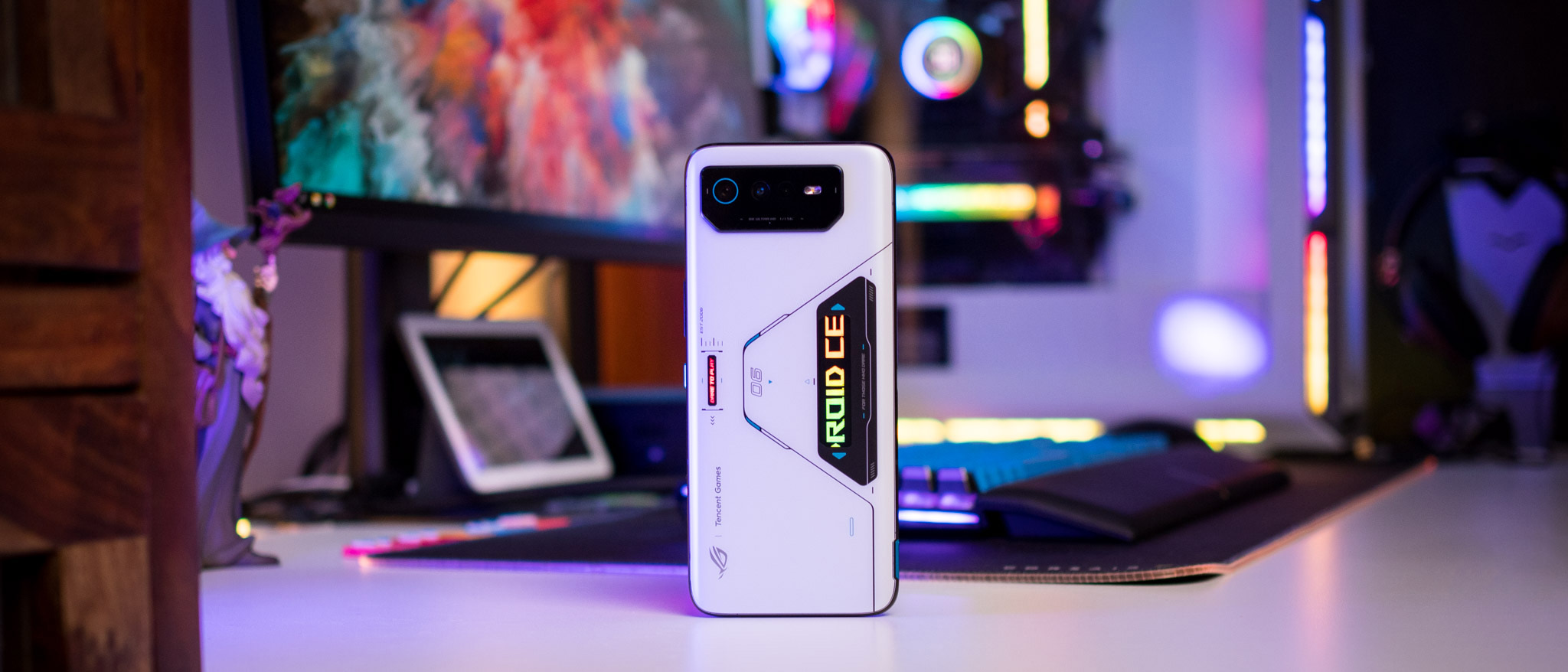Android Central Verdict
The ROG Phone 6 Pro is the fastest phone available today, and the retooled cooling system does a great job managing thermals. The large 165Hz AMOLED panel is an absolute joy to use, the customizable AirTriggers make a huge difference in games, and the side-mounted USB-C port is intact — as is the 3.5mm jack. There's a decent camera at the back, a clean Android 12 interface without any bloatware, and the battery lasts well over a day even with heavy use. In short, this is the best gaming phone of 2022 by a long margin.
Pros
- +
Sublime 165Hz AMOLED screen
- +
Currently the fastest Android phone
- +
Bold gaming-focused design
- +
Customizable ultrasonic triggers on the side
- +
Two-day battery life with 65W fast charging
- +
Clean software with zero bloatware
- +
IPX4 splash proof
- +
Loud stereo sound, 3.5mm jack, side-mounted USB-C port
Cons
- -
Fewer software updates than other high-end phones
- -
Cameras not on par with other flagships
Why you can trust Android Central
Three years ago, ASUS consolidated its phone business into two product lines: ROG and Zenfone. The former is targeted at the high-end segment and features the latest hardware innovations the brand has to offer, and the latter is aimed at the value flagship category. This strategy has allowed ASUS to solidify its presence in two key segments, and the brand is looking to build on that in 2022.
The ROG Phone series debuted in 2018 and is one of the best-selling gaming phones in the market. There's no shortage of choice in this particular category, with the likes of Nubia, Black Shark, and POCO offering gaming-focused phones with bold designs and custom hardware features. But the ROG Phone continues to be the one to beat, and the ROG Phone 6 series brings a lot of exciting new features.
The phone is the first to be powered by Qualcomm's Snapdragon 8+ Gen 1, and it has an AMOLED panel that now goes up to 165Hz. The new heat dissipation system allows you to play games for longer without having to worry about throttling, and ASUS is introducing new accessories. With increased rivalry in this segment, can the ROG Phone 6 retain its crown as the best gaming phone of 2022? Let's find out.
About this review
This review was written after using the 18GB/512GB version of the ROG Phone 6 Pro for over two weeks in Hyderabad, India. The phone received two updates during that time — an out-of-the-box OTA to the 32.2810.2204.47 build with camera and stability fixes, and another OTA with 32.2810.2205.63 containing bug fixes and the May 2022 security update. ASUS provided the unit to Android Central for review.
ASUS ROG Phone 6 Pro: Pricing and availability
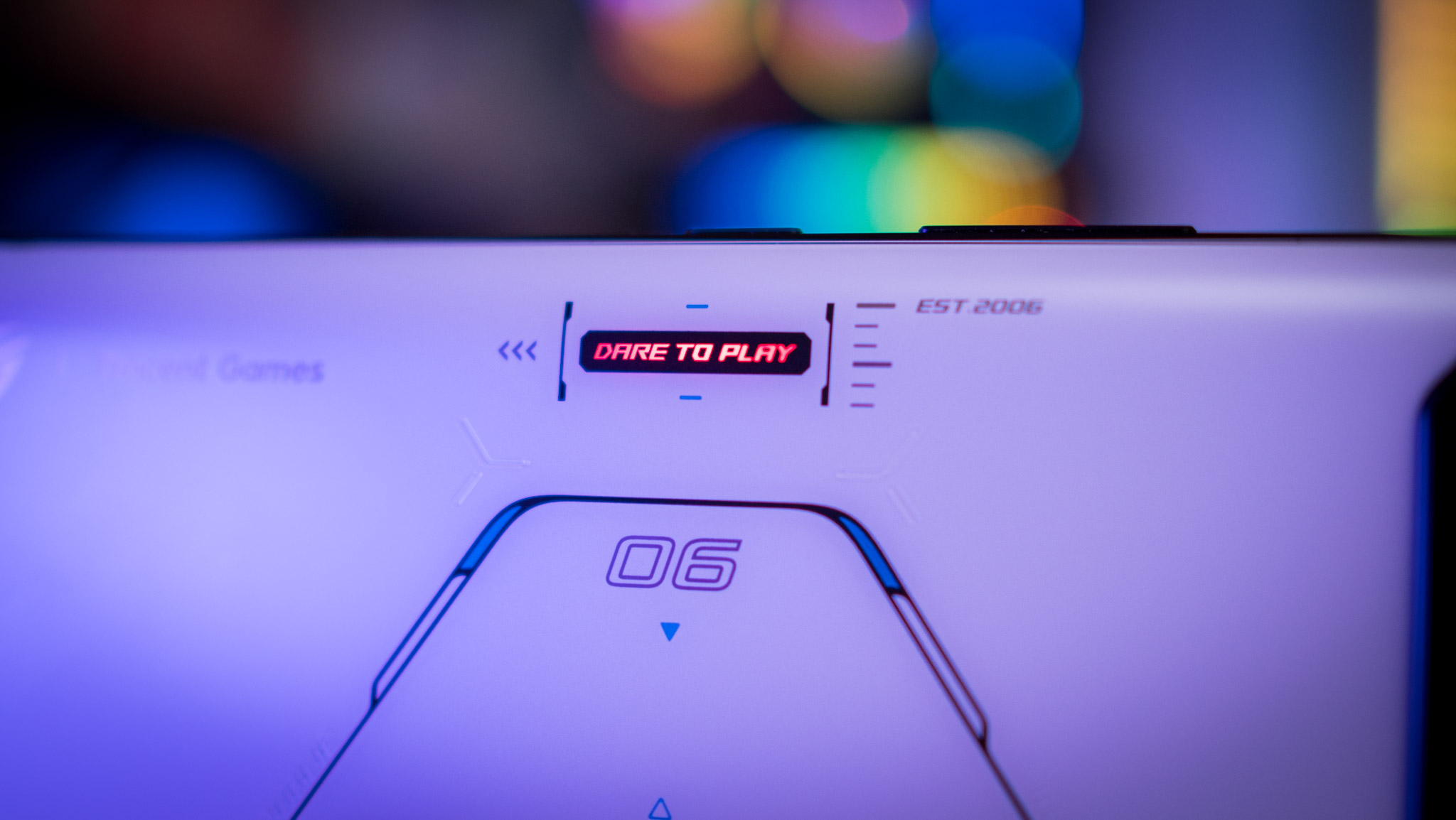
ASUS unveiled the ROG Phone 6 series on July 5, with the phones going on sale globally in the coming weeks. The phones will be available in over 30 regions, including the U.S., U.K., Canada, France, Germany, India, and more.
The standard ROG Phone 6 comes in Phantom Black and Storm White color variants, and the ROG Phone 6 Pro is available in Storm White.
The ROG Phone 6 starts off with a 12GB/256GB model that costs €999 ($1,042) in Europe, and it goes up to 16GB/512GB. The ROG Phone 6 Pro, meanwhile, is available in a single 18GB/512GB variant that sets you back €1,299 ($1,355).
ASUS ROG Phone 6 Pro: Design
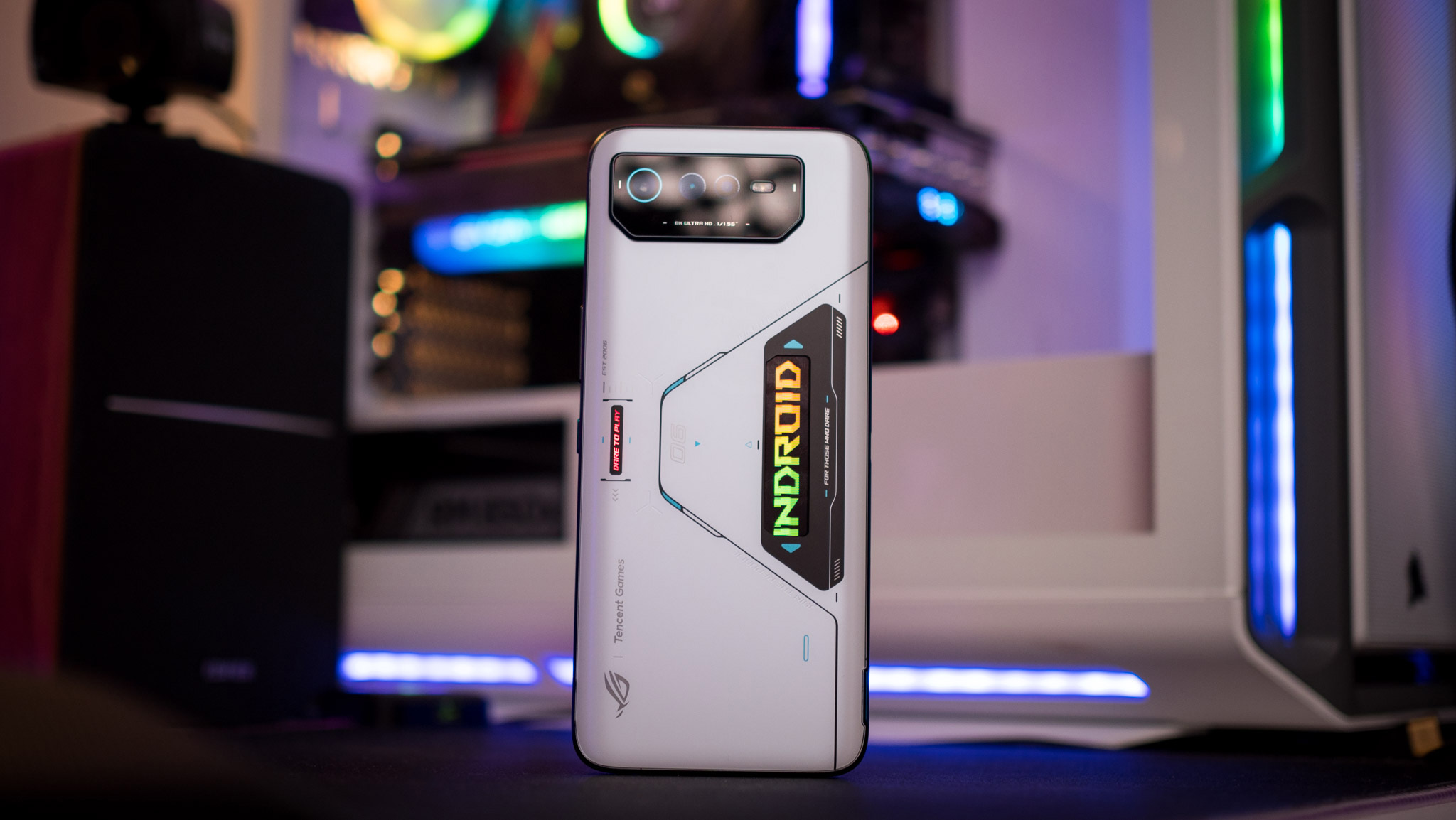
The ROG Phone 6 Pro shares a design aesthetic that's very similar to last year's ROG Phone 5 Ultimate. While that design certainly stood out, the fact that it was limited to the Ultimate edition meant that it wasn't very accessible, so ASUS ported it over to the standard ROG Phone 6 and 6 Pro this time around. In a similar vein, both phones get a Strom White color option, and ASUS is also introducing Kunai gamepads in that finish.
The Storm White color option is gorgeous, and the ROG Vision screen at the back is distinctive.
The back isn't as busy as previous generations, and the Storm White finish looks gorgeous. Like last year, there are blue accents that add some flair to the design; the power button, camera ring around the 50MP lens, and the SIM card tray are all decked out in blue. ASUS says the design is "reminiscent of a spaceship hurtling through the universe."
It's usually the camera island that steals the focus at the back, but here the attention immediately goes to the ROG Vision color PMOLED display. It is located further up and the positioning makes it a little more distinctive than last year. You can set up the display to kick in during various scenarios: incoming calls, charging, starting a game, or when the screen is on.
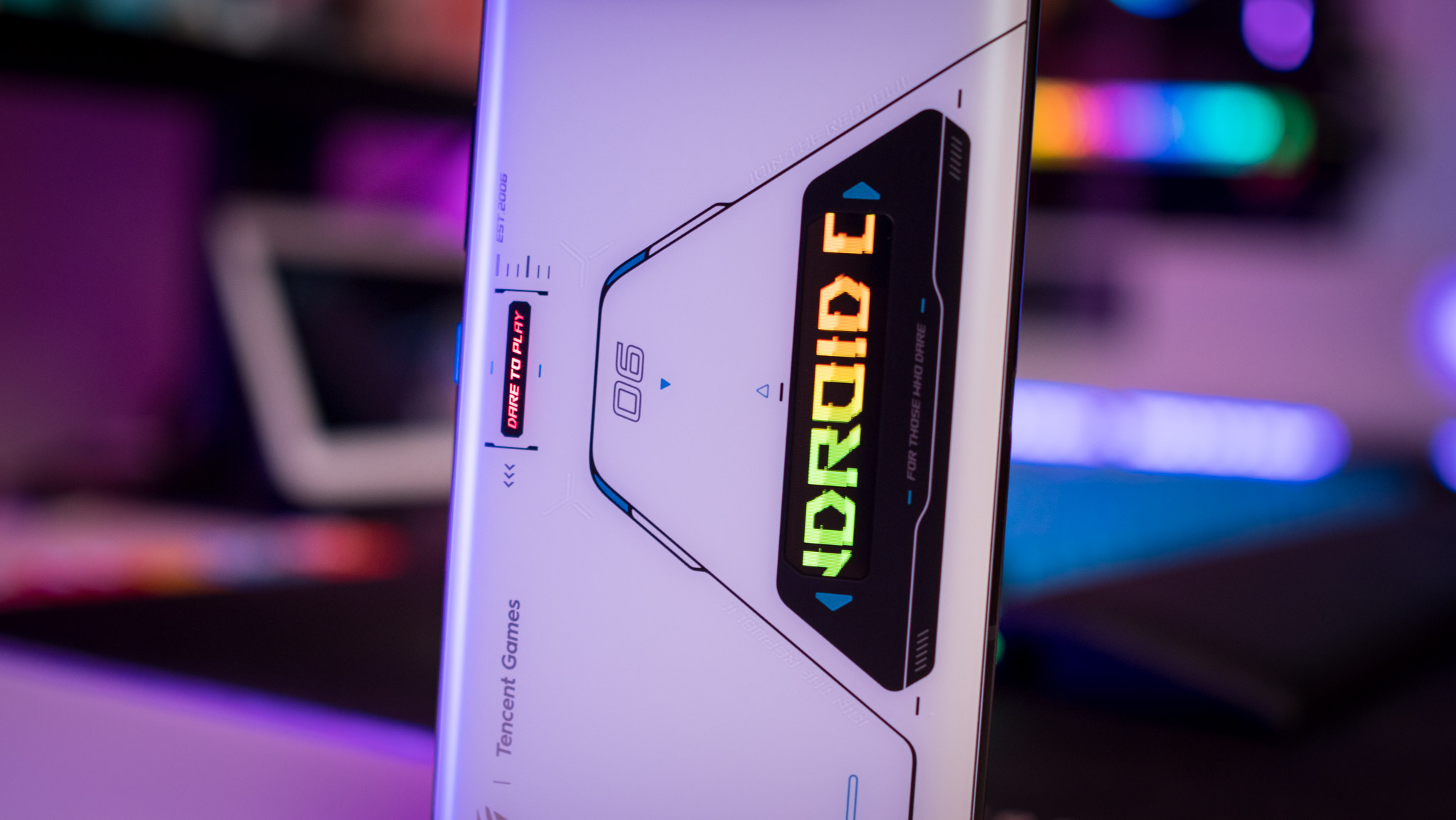
ASUS added over 60 animations this time around, and the best part is that you can make your own effects — whether that's text, a signature, or an image. It is a nice differentiator, and has a decent amount of utility as well; more so than just having LEDs at the back.
The ROG Phone 6 Pro has a frosted glass texture with a matte finish that makes it easy to hold and use the device, and even though this is a tall and heavy phone (239g), ASUS did a great job with the weight distribution — it doesn't feel unwieldy at all. The black camera housing adds a nice bit of contrast to the design at the back, as does ROG Vision. The back glass pane is covered by a layer of Gorilla Glass 3.
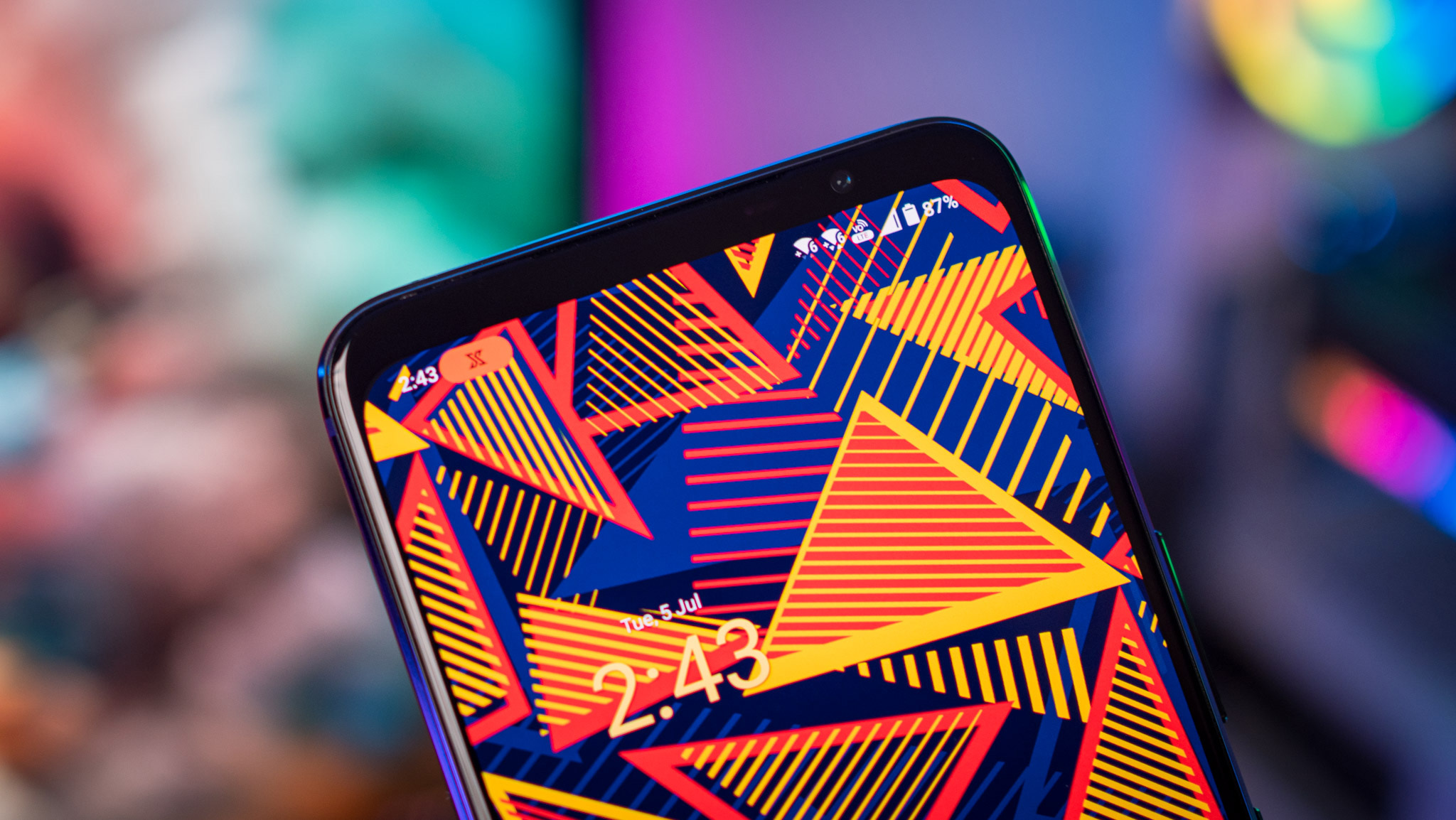

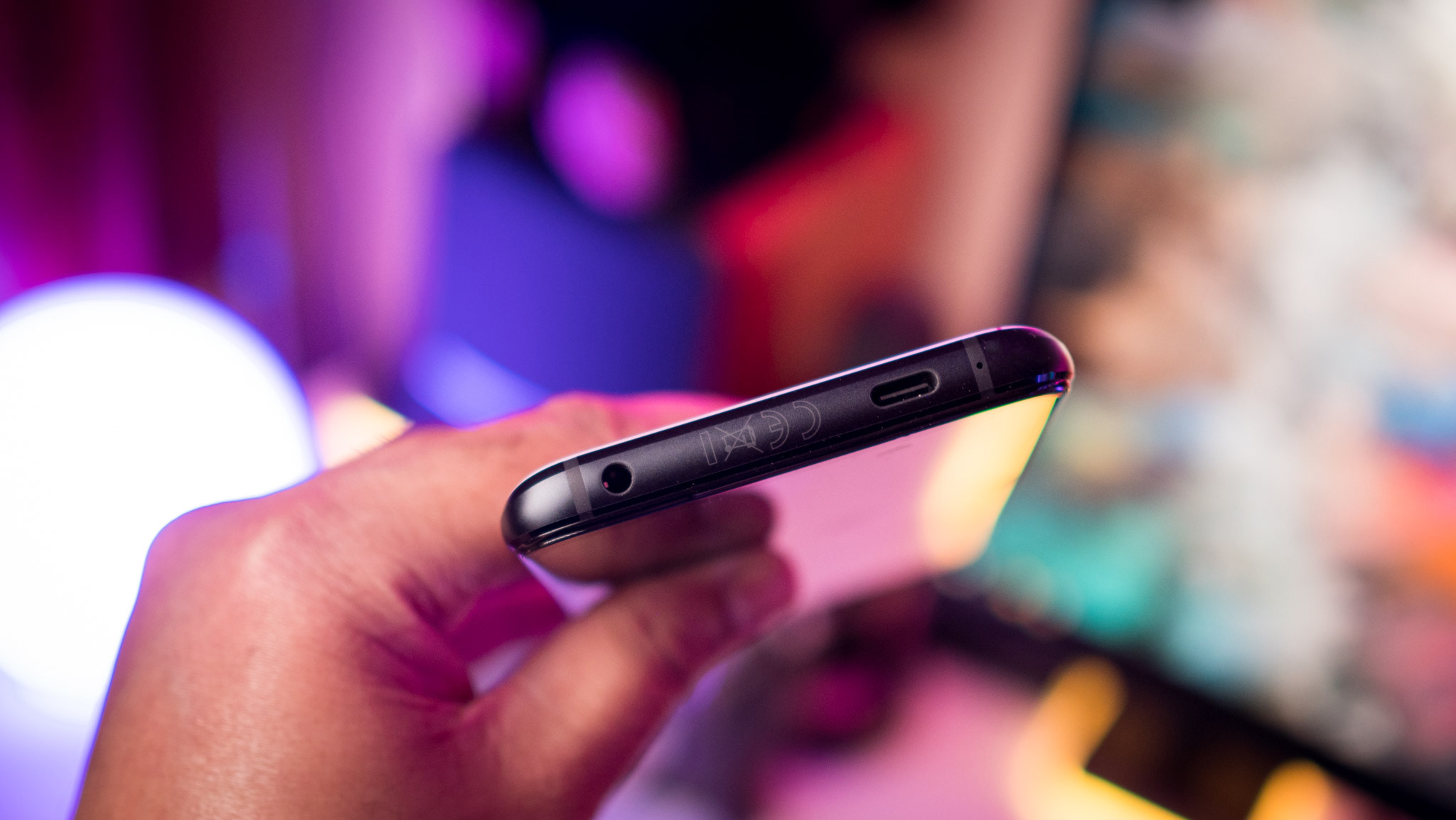

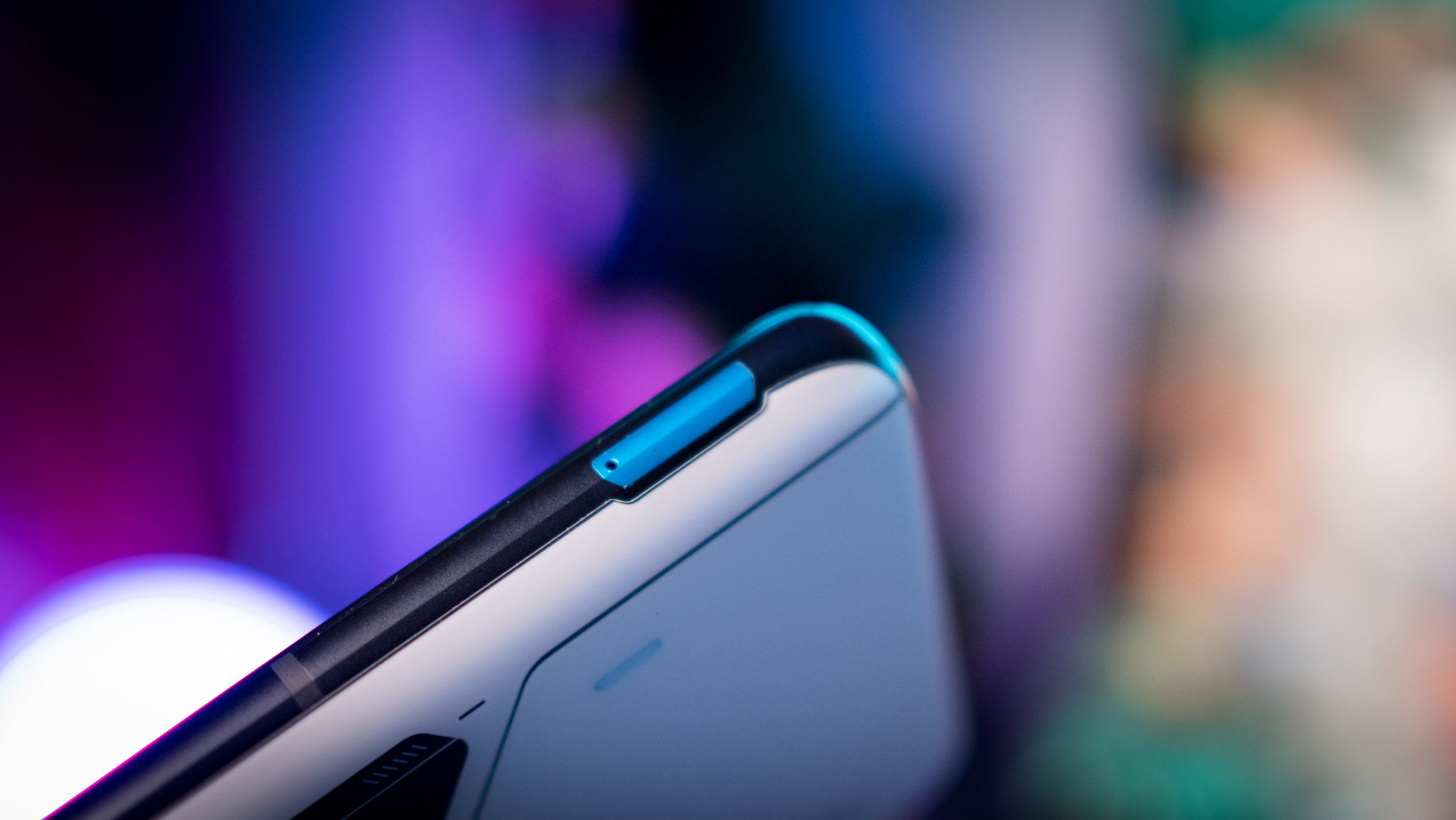
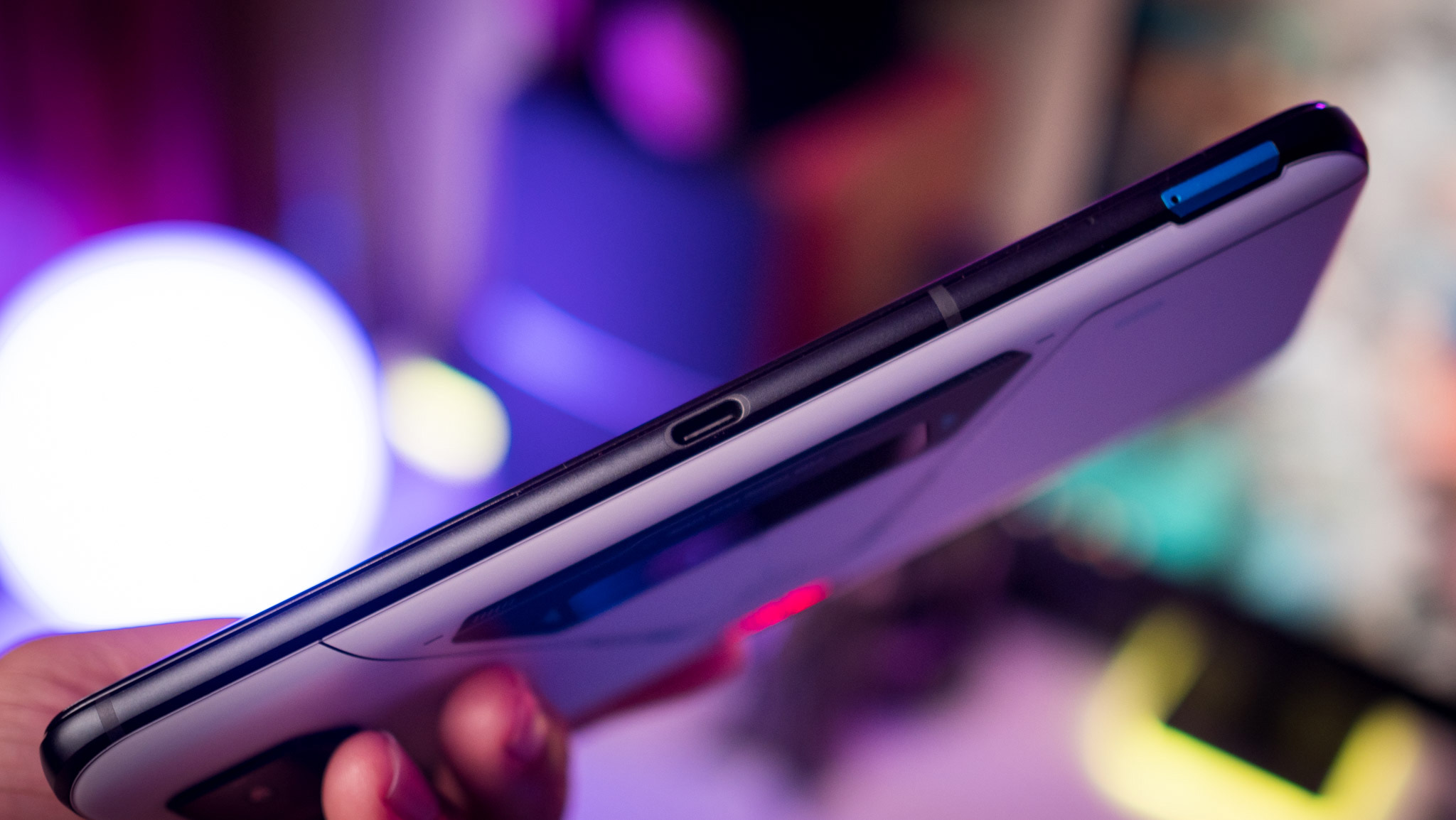
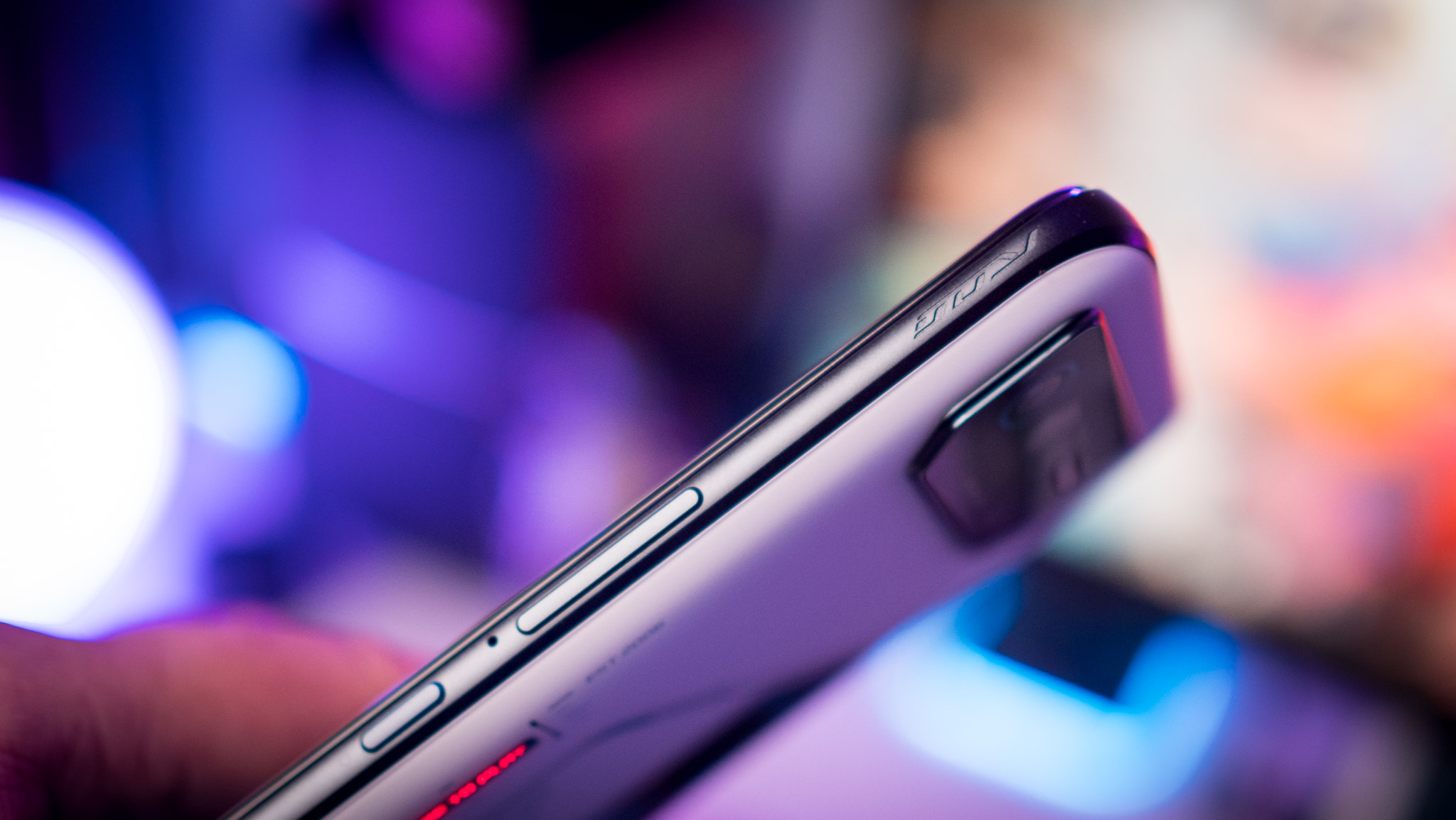
Like previous generations, the right side of the phone is busy; you'll find the power and volume buttons, and the ultrasonic AirTriggers here. The left side has the SIM-card tray and a unique side-mounted USB-C port. This has been a mainstay on ROG Phones for some time now, and it lets you easily charge your phone while gaming. The side port is versatile and works over USB 3.1 Gen2, with the bottom port limited to USB 2.0.
At the bottom, you'll find a rare sight: a 3.5mm jack. I haven't used many phones this year that still have a 3.5mm jack, and certainly not any flagships, so it is nice to see the analog jack intact here. And on the subject on features you won't find anywhere else, there is a tiny LED notification light at the front, with ASUS somehow managing to cram it into the bezel.
There's a lot to like with the ROG Phone 6 Pro's design. The aggressive styling at the back is sure to turn heads, the phone manages its heft well — both in one-handed use and while gaming — and the side-mounted USB-C port is very useful.
ASUS ROG Phone 6 Pro: Screen
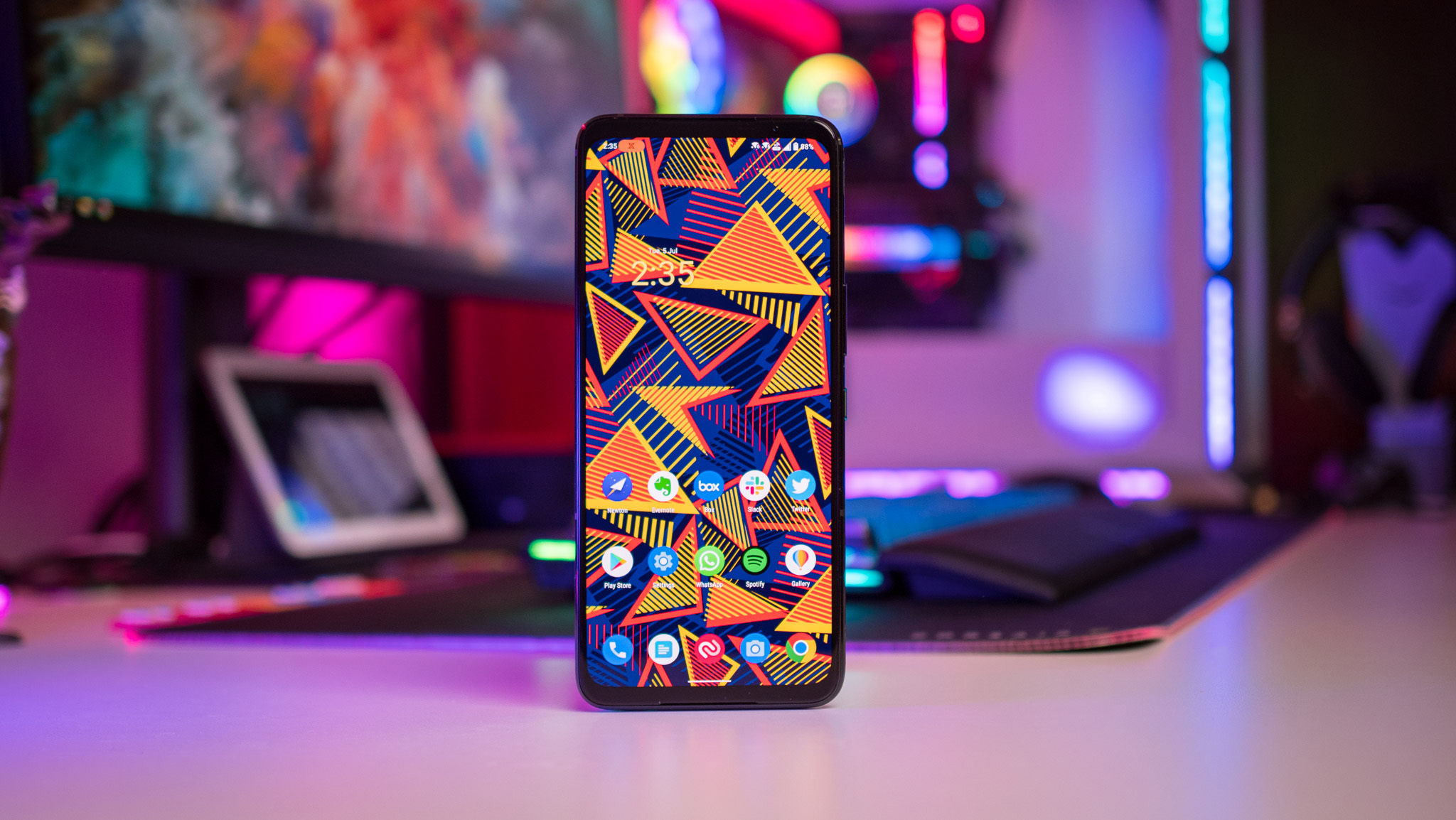
The ROG Phone 6 Pro has a 6.78-inch AMOLED panel made by Samsung, and the tall 20.4:9 ratio (2448 x 1080) means it isn't as usable one-handed. The Samsung-made panel continues to be a standout, delivering vibrant colors, excellent contrast levels, and great viewing angles.
This is the best screen you'll find on a gaming phone today — and there's powerful stereo sound and a 3.5mm jack.
ASUS says the device has the lowest touch latency of any phone in the market at 23ms, and when coupled with 720Hz touch sampling, you get a thoroughly enjoyable phone. Day-to-day interactions are fluid like no other device, and coming from a 120Hz Pixel 6 Pro, there is a level of immediacy that is easy to get used to.
There's also HDR10+, and like the Find X5 Pro, the phone is calibrated to an average Delta-E of <1 at two brightness levels: 450 nits and 100 nits. This ensures that the phone delivers the same color accuracy at higher brightness levels, and I had zero issues in this regard. The phone gets sufficiently bright in outdoor use, going up to 800 nits in auto mode and 1200 nits for HDR content.
There's also dual stereo sound with large 12x16mm channels, and the sound is tuned by Dirac. As you'd imagine, the onboard audio is among the loudest of any phone, and Dirac's tuning makes a difference here. The 3.5mm jack works with Hi-Res products, with the port able to deliver up to 24-bit/192kHz playback. ASUS's AudioWizard continues to be a noteworthy addition, offering a 10-band EQ and various modes to switch the sound profile accordingly.
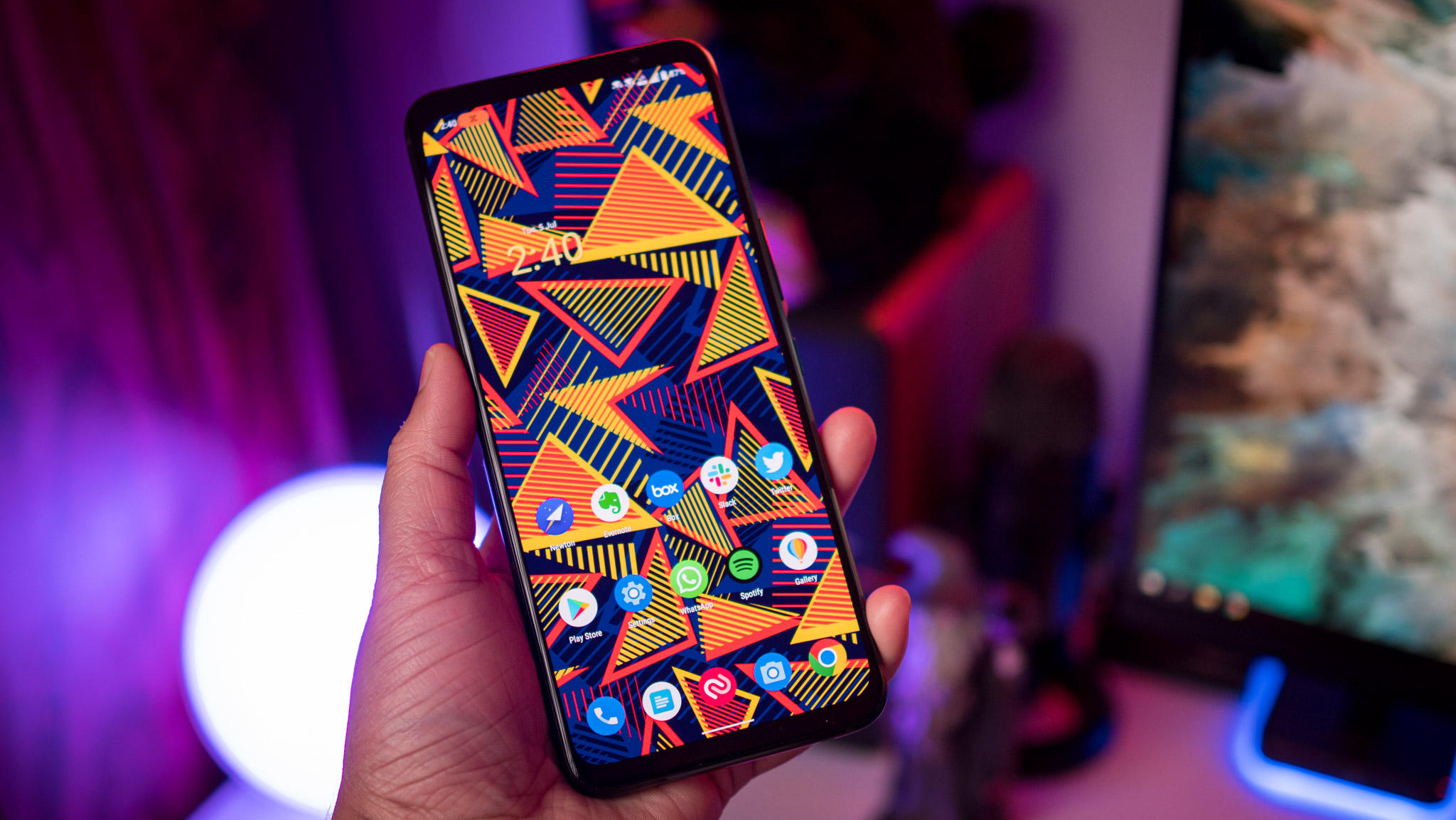
The only feature that the phone misses out in LTPO tech. The dynamic refresh tech allows devices to scale the refresh dynamically based on the content playing on the screen, but ASUS isn't using it here. You can select the refresh to 60Hz, 90Hz, 120Hz, 144Hz, or 165Hz, and there's also an auto setting that switches the screen refresh between these five levels automatically.
You'll notice there are larger bezels than most phones in this segment, with the front camera tucked into the bezel. That's not a bad thing necessarily as you get an all-screen design without any cutouts, and for what it's worth, it makes using the phone a little easier.
There are a lot of small tweaks that culminate in the ROG Phone 6 Pro being a fantastic device for gaming. The AMOLED screen has vibrant colors, the onboard audio is loud enough for most use cases, and the phone has a great in-hand feel, particularly while gaming.
There aren't many games that take full advantage of the 165Hz tech, and ASUS is working with game publishers to get more titles added to the list. The Taiwanese manufacturer has been doing this for several years, and we're at a point where there are a lot of great games that run at 120Hz, and playing titles like Oddmar on the ROG Phone 6 Pro is an absolute joy.
ASUS ROG Phone 6 Pro: Performance
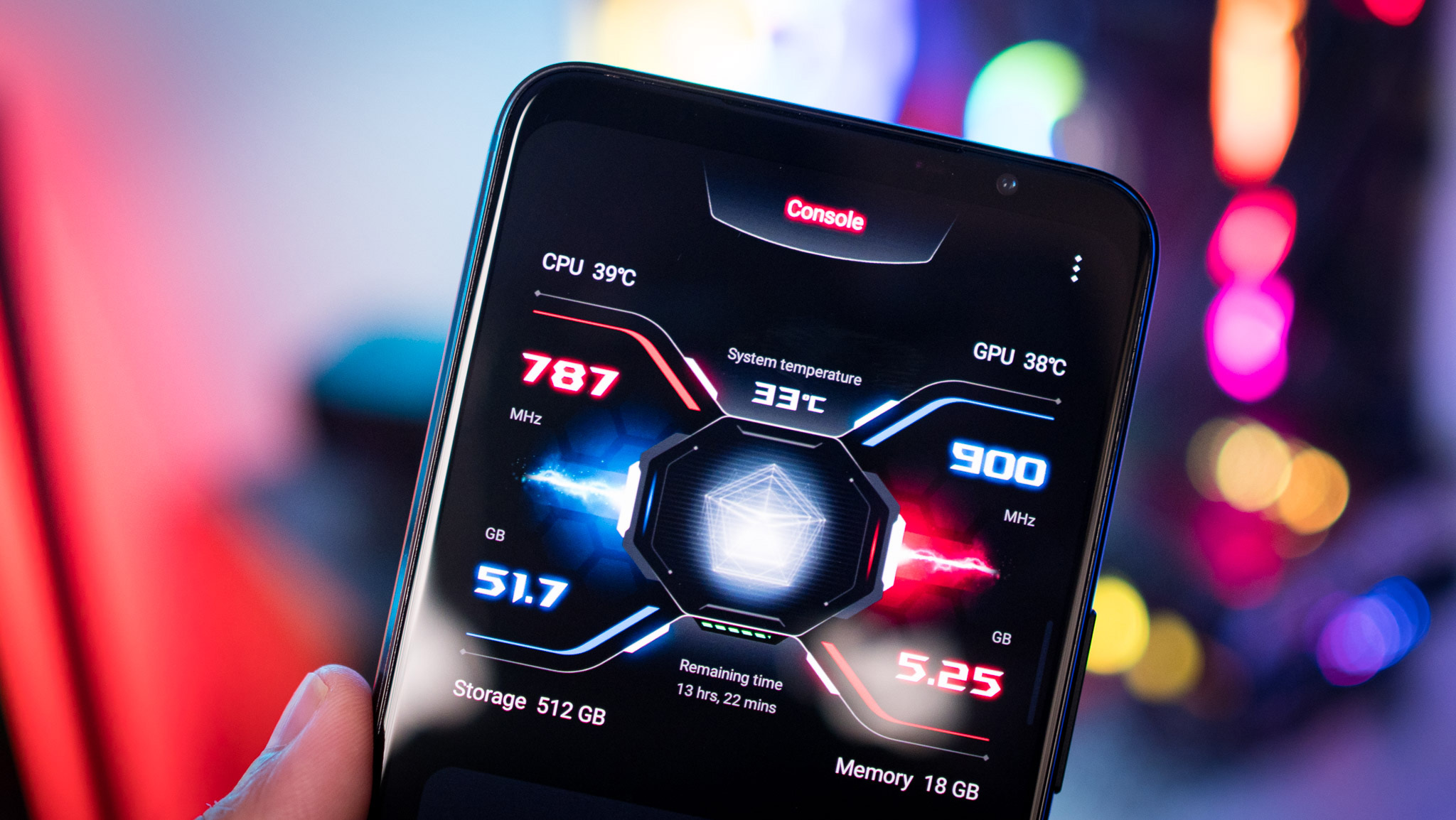
I'm not exaggerating when I say that the ROG Phone 6 Pro has the best hardware package of any phone I've used this year. The best Android phones are powered by Qualcomm hardware, but a few manufacturers don't utilize the entire capabilities of the chipset — that isn't the case here.
This is the most powerful phone I've used in 2022 — nothing else comes close.
The ROG Phone 6 Pro is powered by the Snapdragon 8+ Gen 1, and it goes up to an insane 3.2GHz for the Cortex X2 core, 2.8GHz for the A710 cores, and 2.0GHz for the A510 cores. Qualcomm touts a 10% uptick in CPU and GPU performance over the Snapdragon 8 Gen 1, but what's more interesting is the energy efficiency: the 8+ Gen 1 consumes 30% less power for the same workloads.
While both platforms are built on a 4nm node, Qualcomm switched foundries for the Snapdragon 8+ Gen 1, which is being fabricated at TSMC. The Snapdragon 8 Gen 1 was manufactured at Samsung LSI, and it's evident that Samsung ran into a lot of issues with its 4nm node. As a result, the Snapdragon 8 Gen 1 consumes a lot of power and runs into throttling issues. With the switch to TSMC, Qualcomm managed to offset those issues and delivered sizeable gains in a mid-cycle refresh.
| Category | Galaxy S22 Ultra | ROG Phone 6 Pro | Xiaomi 12 Pro | iPhone 13 |
|---|---|---|---|---|
| CrossMark (Overall) | 998 | 1123 | 881 | 1144 |
| Productivity | 980 | 1113 | 754 | 1134 |
| Creativity | 989 | 1132 | 1028 | 1304 |
| Responsiveness | 1086 | 1126 | 885 | 794 |
| Geekbench 5.1 (single-core) | 1004 | 1306 | 1239 | 1717 |
| Geekbench 5.1 (multi-core) | 3151 | 3653 | 3522 | 4492 |
| 3DMark Wild Life (score) | 6923 | Maxed out | 7381 | 8647 |
| 3DMark Wild Life (FPS) | 41.5 | Maxed out | 44.2 | 51.75 |
| 3DMark Wild Life Extreme (score) | 2098 | 2827 | 1903 | 2418 |
| 3DMark Wild Life Extreme (FPS) | 12.5 | 16.8 | 11.45 | 14.45 |
The Geekbench scores clearly show the ROG Phone 6 Pro pulling out a significant lead over its Android rivals like the Galaxy S22 Ultra and the Xiaomi 12 Pro. This is evident in real-world usage as well, with the phone breezing through multitasking tasks and just about anything I threw at it.
The phone manages an even bigger lead for gaming, maxing out 3DMark's Wild Life, a demanding test in and of itself. It even outscores the iPhone 13 and its mighty A15 Bionic in synthetic workloads, being the first Android phone I've used to do so.
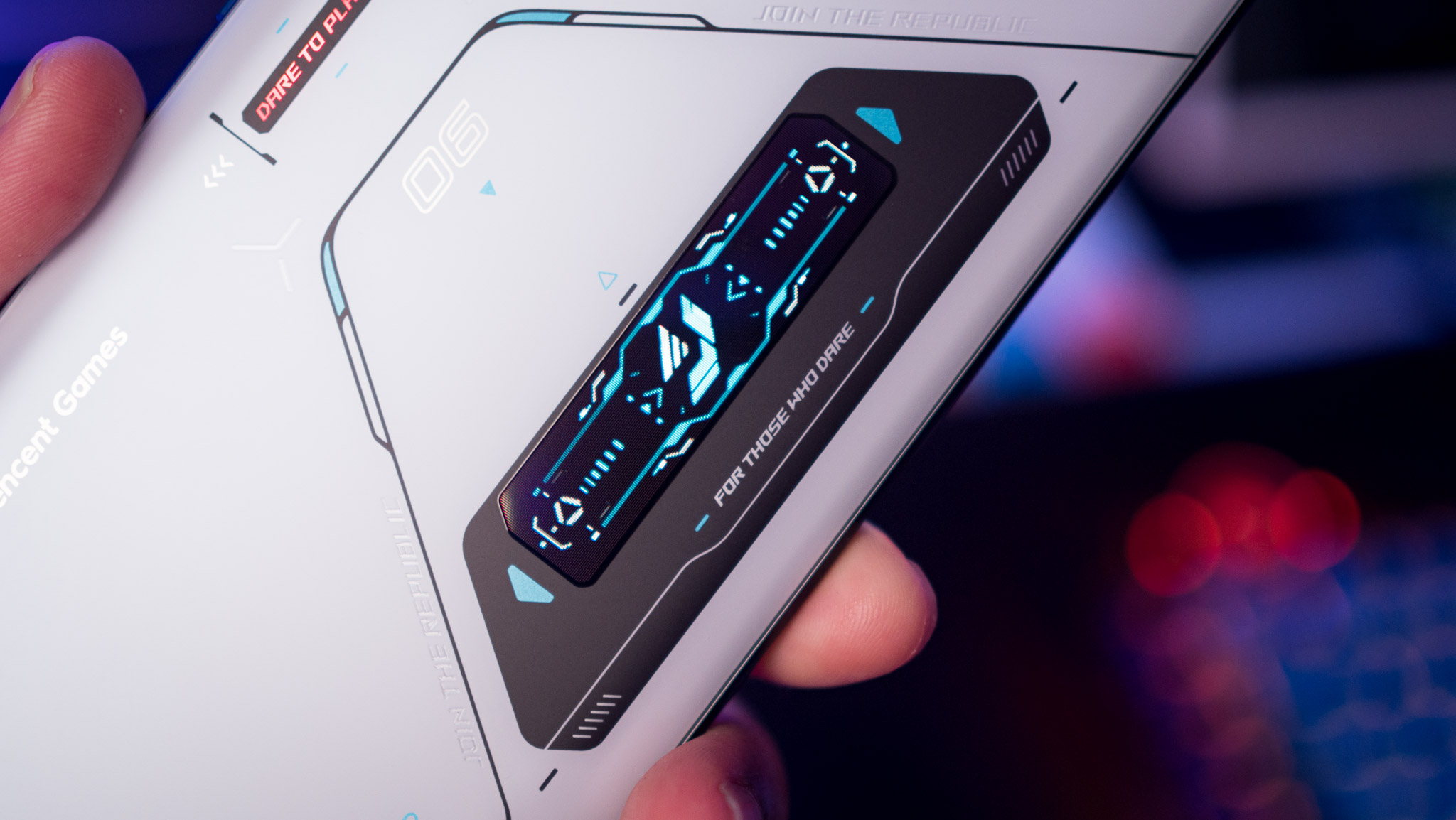
The ROG Phone 6 Pro has a distinct edge over just about every other Android phone, delivering the same level of performance while consuming less power. That holds up in real-world use, with the phone lasting nearly two days on a full charge with medium use. The phone absolutely flies during gaming, effortlessly handling demanding titles. ASUS did a great job optimizing the hardware, and I didn't see any slowdowns whatsoever.
The two built-in ultrasonic AirTriggers make a huge difference, and this year ASUS added the ability to configure two different actions for the same button — one when you're pressing down, and the other when you're lifting your finger off the button.

What I particularly like about ASUS's gaming phones is the sheer amount of customization on offer. Armoury Crate is a fantastic utility that gives you granular control over the hardware. You can choose between three modes — Dynamic strikes the ideal balance for daily use, Ultra durable is designed for energy efficiency, and X Mode turns everything up to 11.
Game Genie comes in handy as well, with the overlay giving you easy access to adjusting networking settings, disabling incoming calls while gaming, setting up macros, and so much more. It's these features that give ROG Phone 6 Pro stand out from its rivals. It isn't hard to make a gaming phone, but the amount of work ASUS put into customization and unique features make it the go-to option.
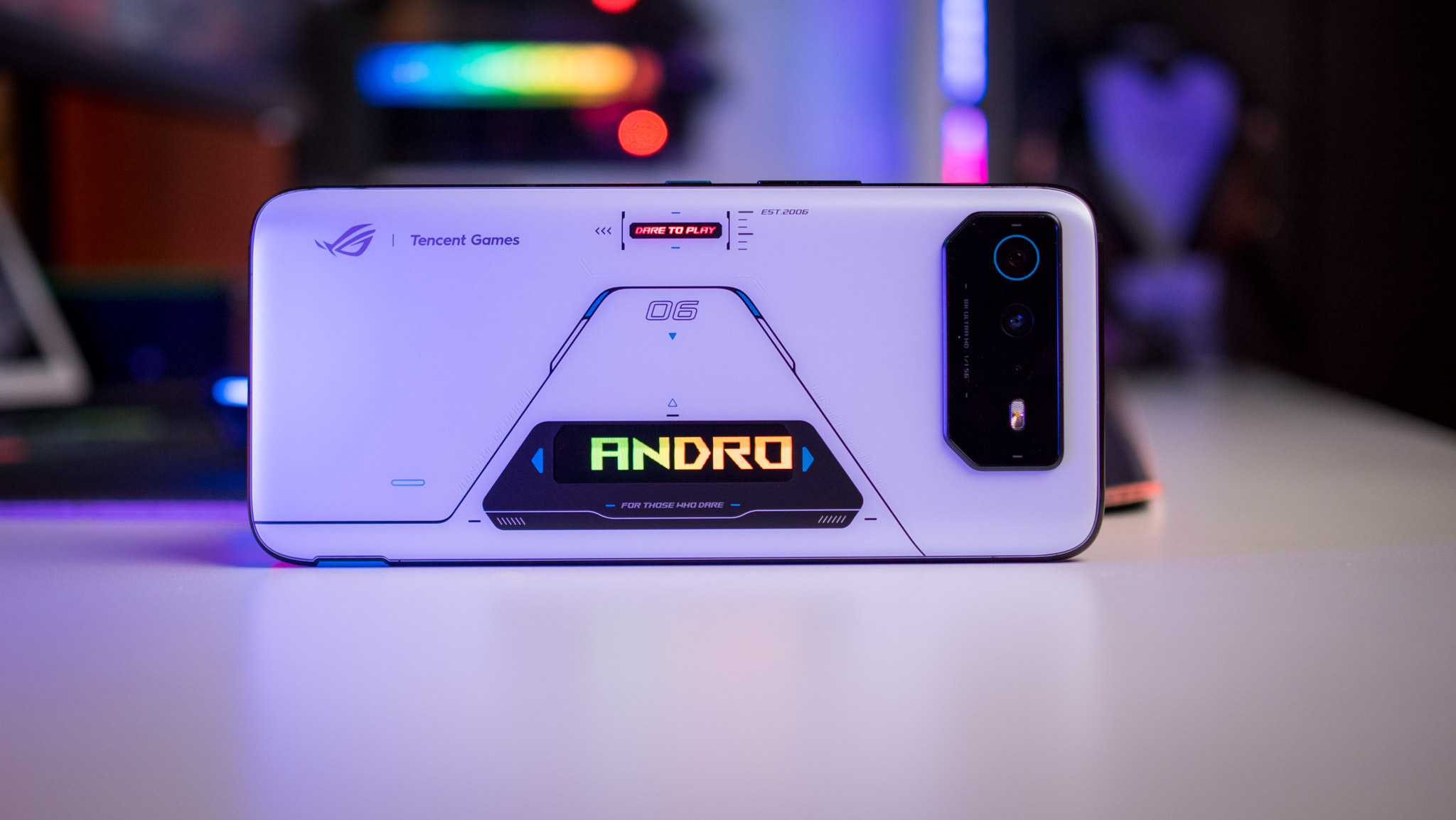
Continuing with the hardware, you get an insane 18GB of 18GB of LPDDR5 RAM and 512GB of UFS 3.1 storage here, and the RAM is definitely overkill — even in demanding titles or multitasking, I never crossed 8GB of active RAM use. You're not missing out on the connectivity front either, with the device offering Bluetooth 5.2, AptX Adaptive and LDAC audio codecs, NFC, dual-SIM as standard, and 2x2 Wi-Fi 6e with three antennae.
An exciting new addition is IPX4 splash resistance, a first for gaming phones. While it isn't quite the same as IP68, the fact that you get some level of protection against water ingress is a welcome move. ASUS says the external and internal design makes it difficult to protect the device against full dust and water ingress, so we get IPX4 instead.
ASUS overhauled the x-axis vibration motor, with the new haptics engine delivering much better feedback in gaming and daily use. The optical in-screen sensor is fast to authenticate and error-free, and I didn't have any issues in this area. You also get face unlock, but it isn't as secure.
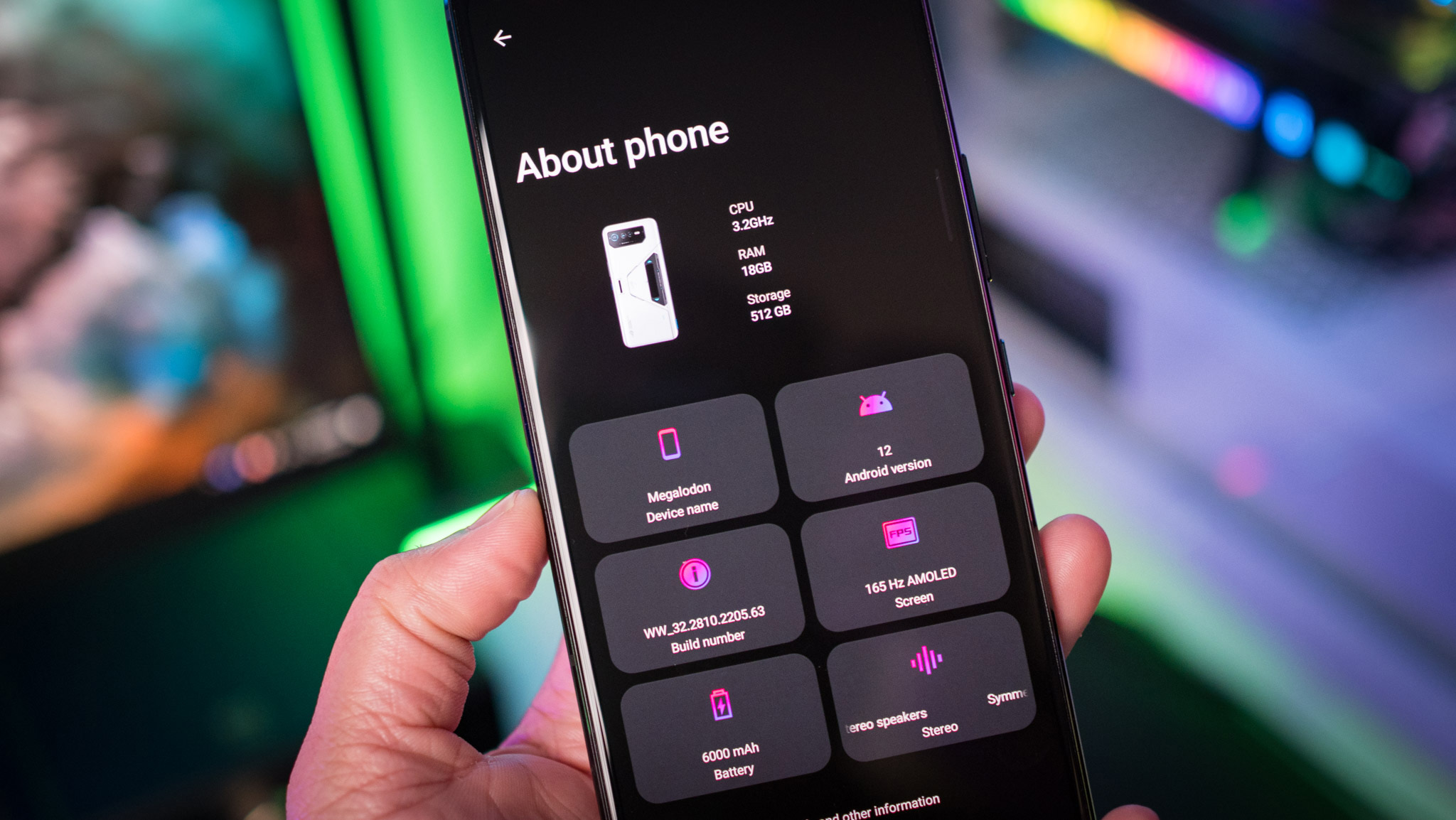
What ASUS does better than just about anyone else is thermal management. There's a new GameCool 6 system that puts the Qualcomm chipset in the middle, flanked by huge graphite sheets and a big vapor chamber for effective heat dissipation. While most high-end phones follow a similar system, ASUS uses a split PCB layout with an interposer in between that's injected with a thermal compound. This compound does a much better job siphoning hot air outward to the thermal layers.
The result of this extensive cooling system is that the ROG Phone 6 Pro doesn't throttle even during extended gaming sessions, and it manages to deliver its peak performance potential for longer. Of course, ASUS has dedicated accessories to manage heat, and this time around, the AeroActive Cooler 6 has an all-new design that uses a Peltier cooling chip.
It uses passive cooling most of the time, and works without using external power. But for active cooling, it relies on the phone's battery, using the side-mounted USB-C port. And at its highest setting, you'll need to connect a cable to the side-mounted USB-C port. Best of all, there are four triggers located on the AeroActive 6 cooler, giving you that much more control for gaming.
ASUS ROG Phone 6 Pro: Battery life
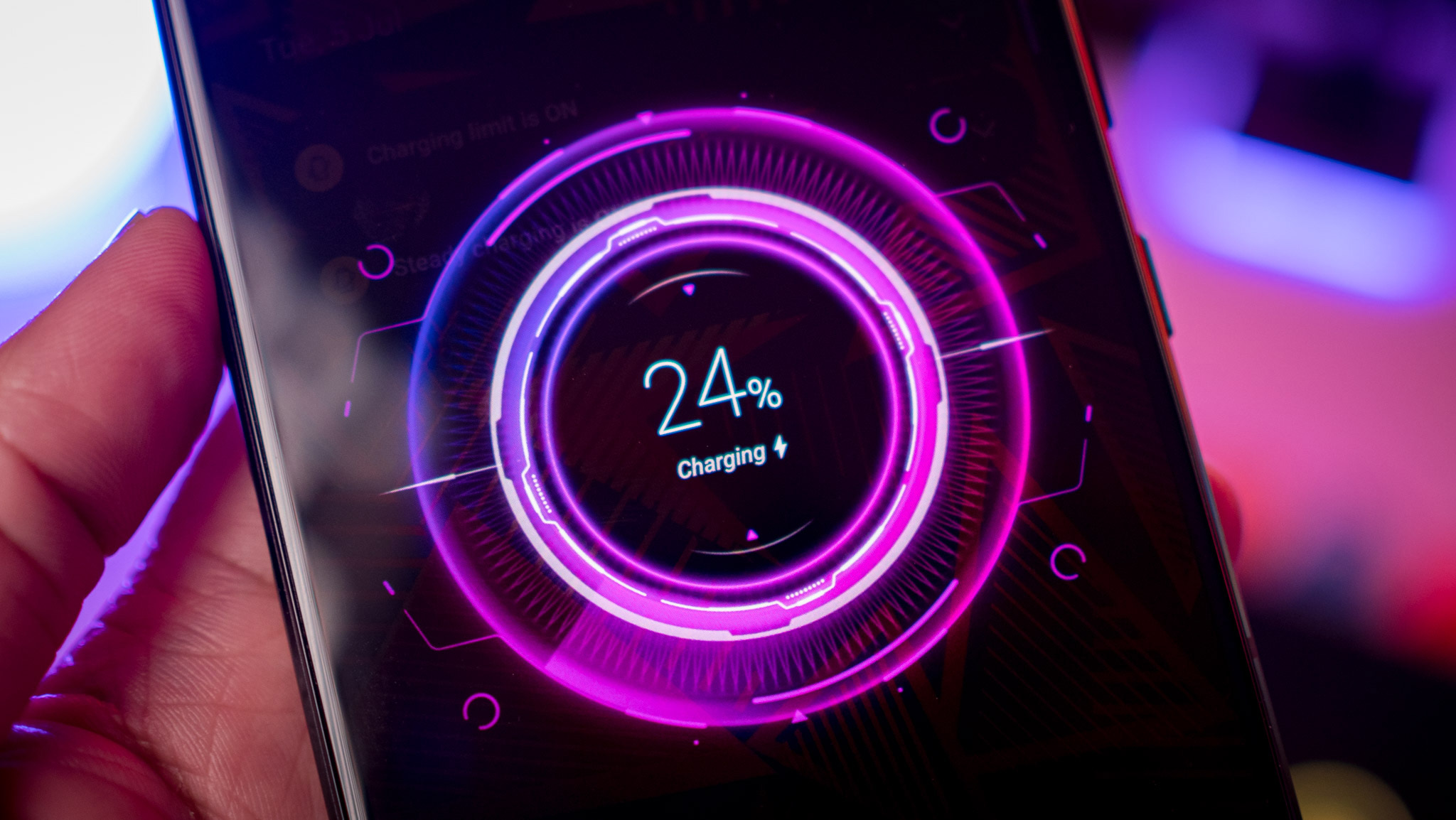
ASUS always offered large batteries on its devices, and the ROG Phone 6 Pro is no different. The phone comes with a massive 6000mAh battery — the same as last year — and like most phones in this category, it uses dual 3000mAh cells. There's no wireless charging here, but you get 65W wired charging, and the device uses USB PD and PPS alongside Qualcomm's Quick Charge 5.0 standard.
With a massive 6000mAh battery, you'll easily get over a day's worth of use even with extended gaming sessions.
Although the phone doesn't use a faster charging standard, it takes less time to fully charge thanks to more efficient charging that delivers a higher wattage for longer. In my use, I averaged just under 50 minutes for a full charge with a USB PD 65W charger; not bad at all for such a big battery. And yes, there is a 65W charger bundled in the box.
There are several features to extend battery longevity, including a Scheduled charging feature that limits the overall charge level so the device isn't sitting at 100% over the course of the night. Then there's Steady charging that delivers charge at a lower wattage to reduce the wear on the battery.
Battery life itself is easily the best of any phone I've used this year. The ROG Phone 6 Pro lasts well over a day without breaking a sweat, and even with heavy use that involves a lot of gaming, you're not going to see the battery go below 15% before the end of the day. That's down to the massive battery and the inherent efficiency of the Qualcomm hardware this time around.
ASUS ROG Phone 6 Pro: Imaging
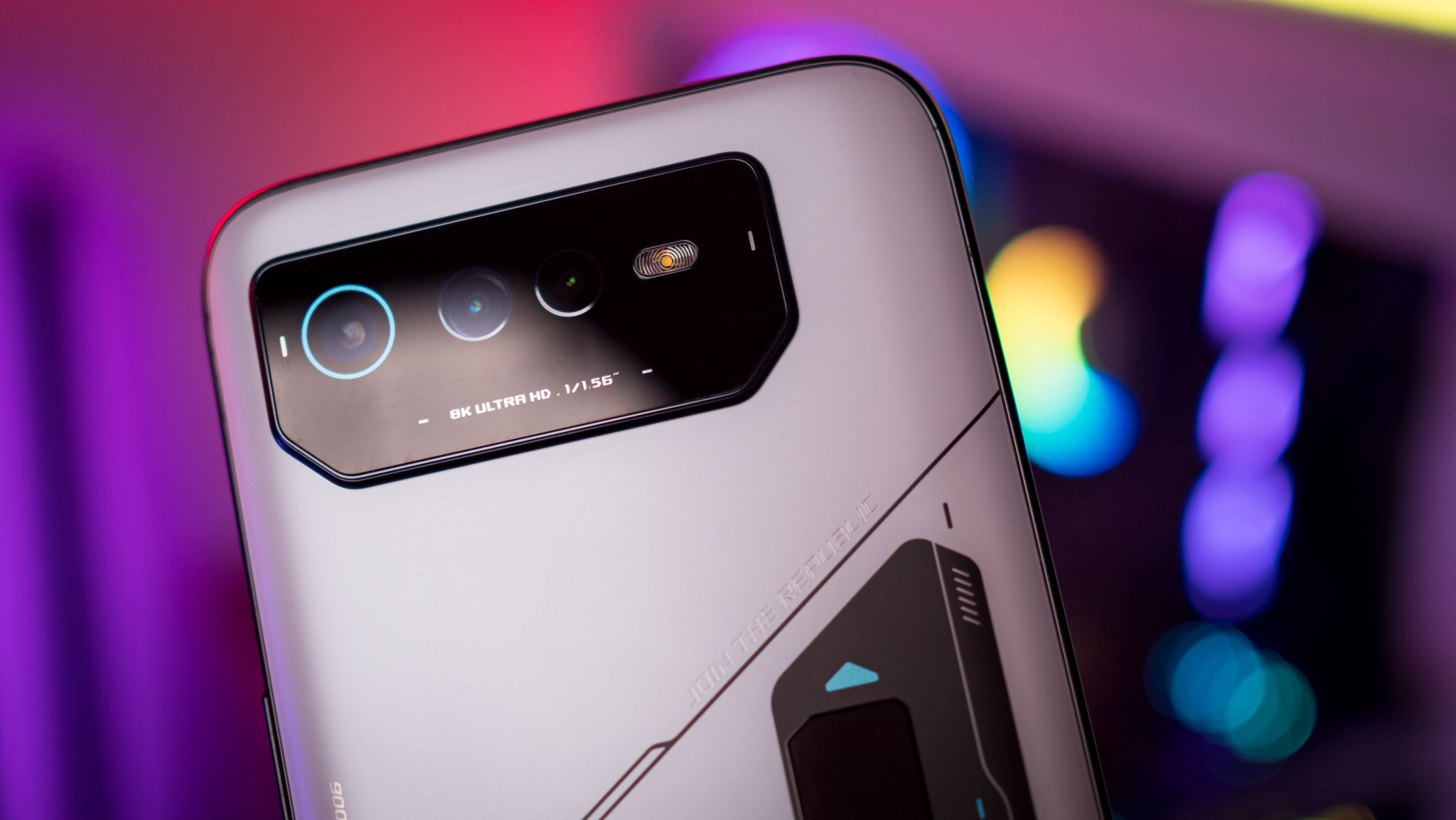
ASUS doesn't focus too much on the camera side of things, but for what it's worth, you get a decent set of sensors here. The ROG Phone 6 Pro features a 50MP Sony IMX766 for the primary lens, 13MP wide-angle module, and a 5MP macro lens. At the front, you'll find a 16MP Sony IMX663 lens.
Interestingly, the phone can shoot 8K video at 24fps, along with 4K at 60fps, and 1080p at up to 240fps. There's no OIS here, but ASUS is using 3-axis EIS to deliver smooth video. The camera interface is pretty standard fare; you get the shooting modes in a ribbon at the bottom, and toggles for switching between the main and wide-angle lenses, Night mode, Google Lens, flash, and so on.
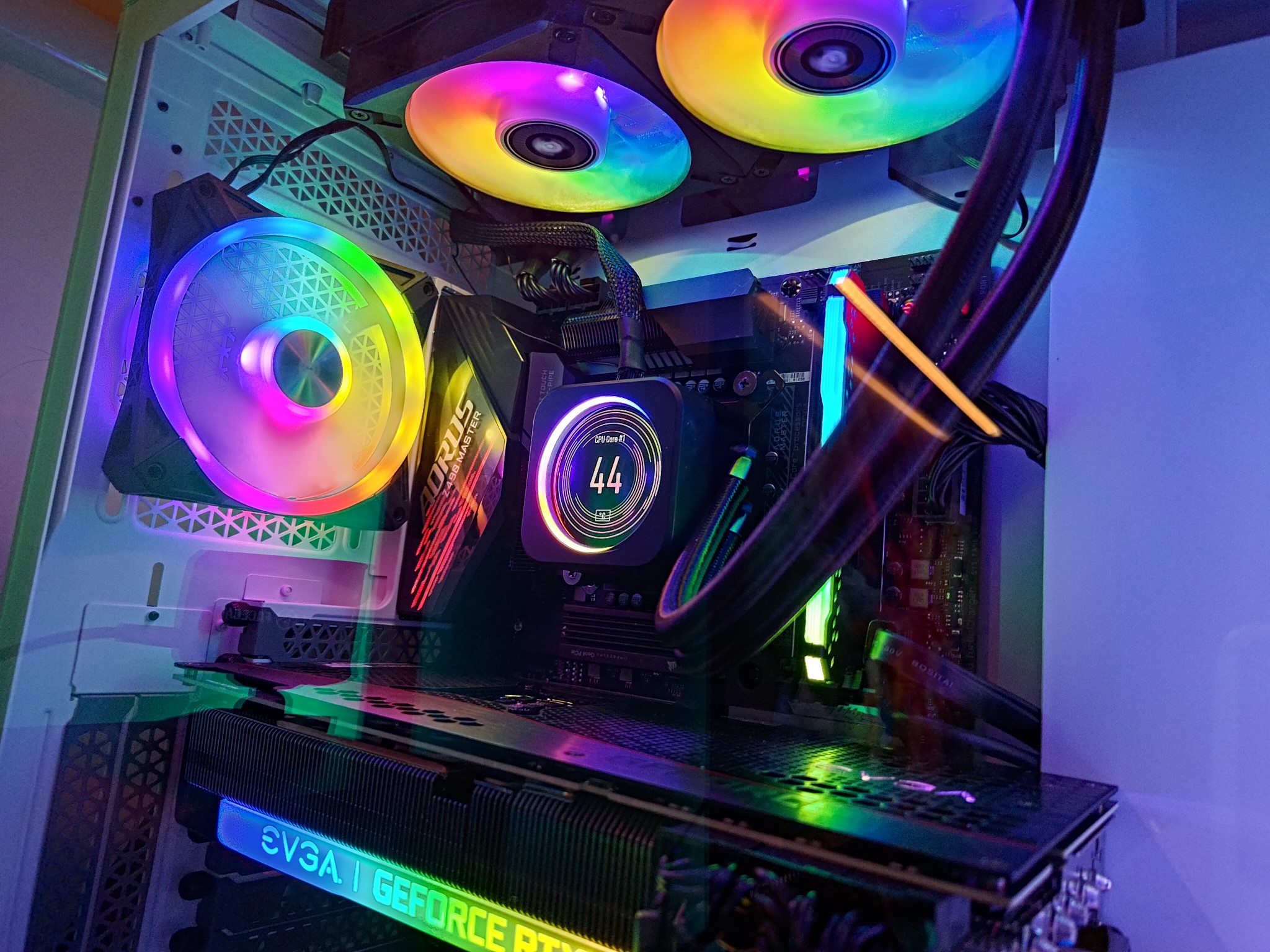
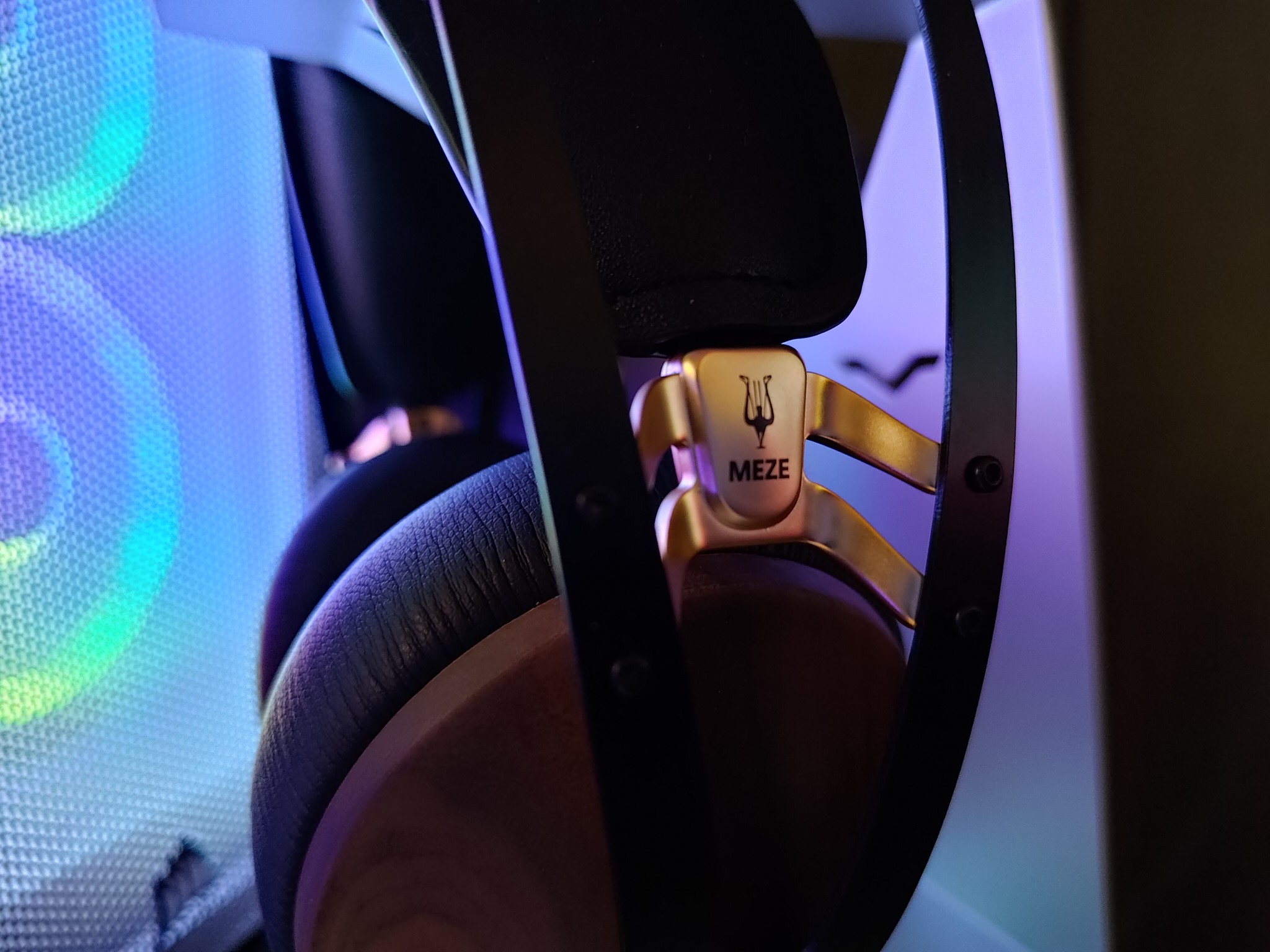
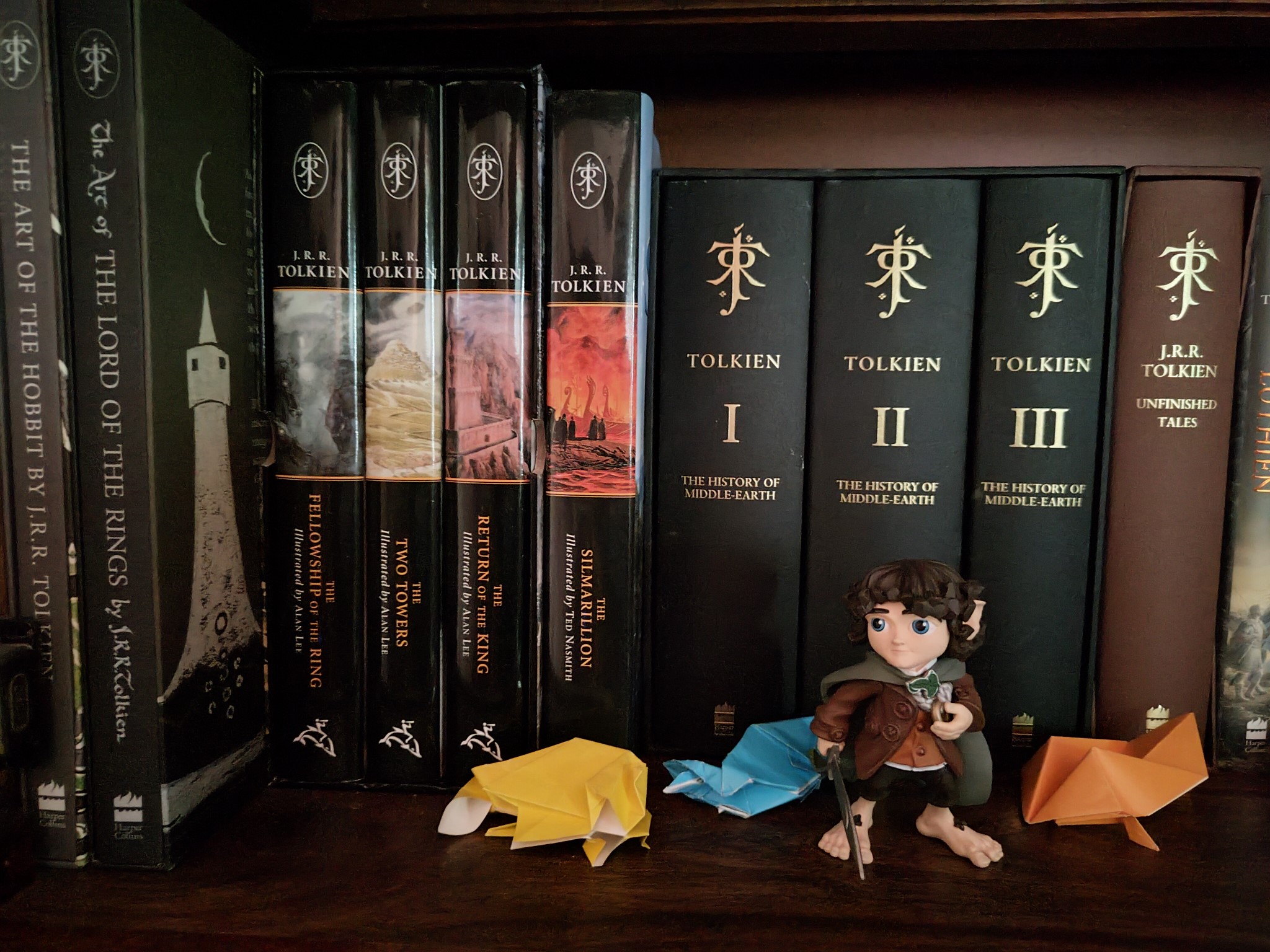
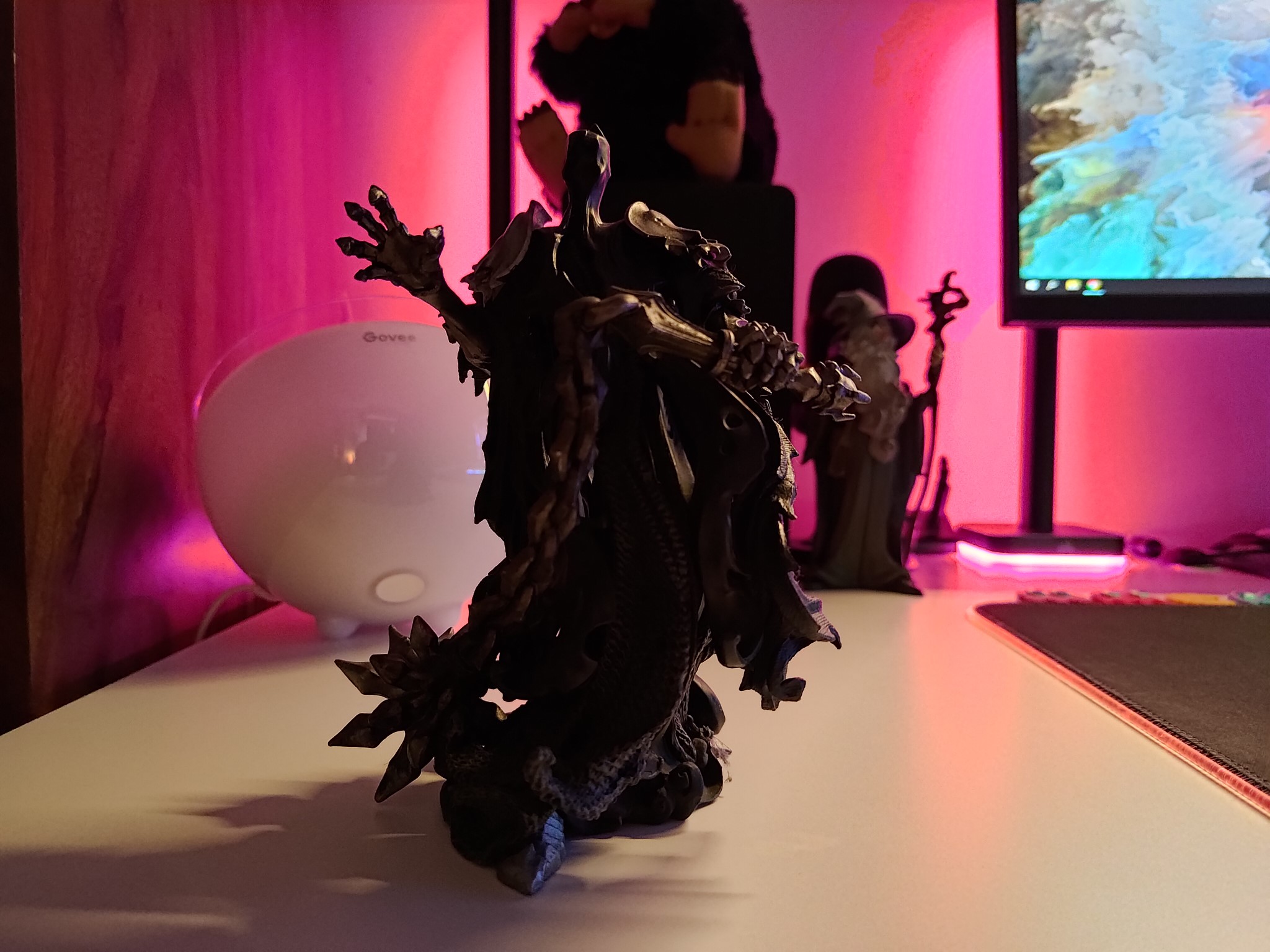
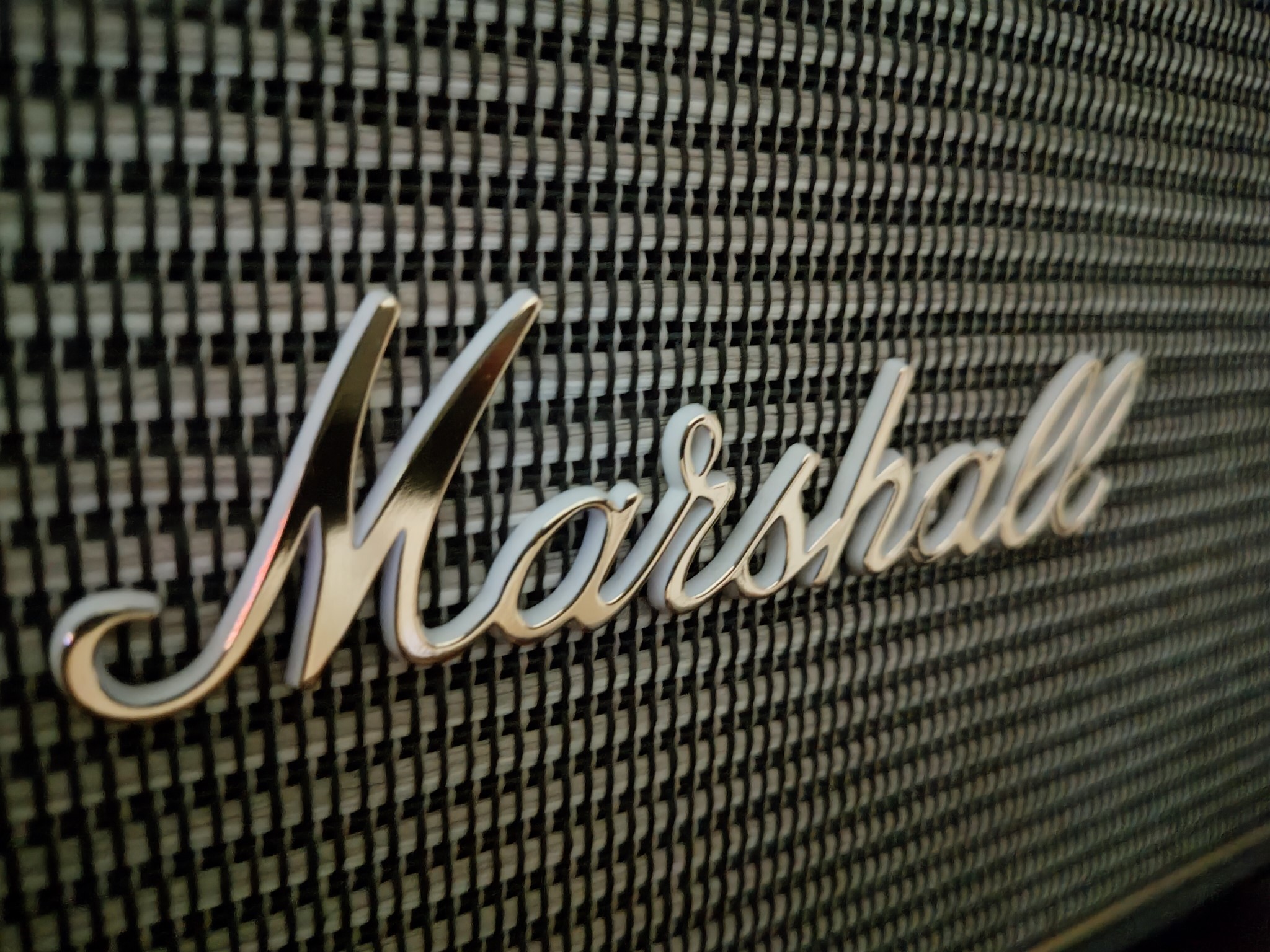
The phone delivers clean photos with good dynamic range in daylight conditions, but it lacks finesse in low-lighting scenarios. The camera struggles to dial in on a subject, and when shot without the Night mode, shots have a lot of noise and muted colors.
The Night mode fixes a lot of these shortcomings, and on the whole, the 50MP camera does a decent enough job in most situations. The 13MP wide-angle lens isn't quite as good, and it struggles to produce usable shots in low-light conditions.
Overall, the camera is fine if all you want to do is share photos on social media, but it isn't on the same level as flagships like the Galaxy S22 Ultra or the Pixel 6 Pro.
ASUS ROG Phone 6 Pro: Software
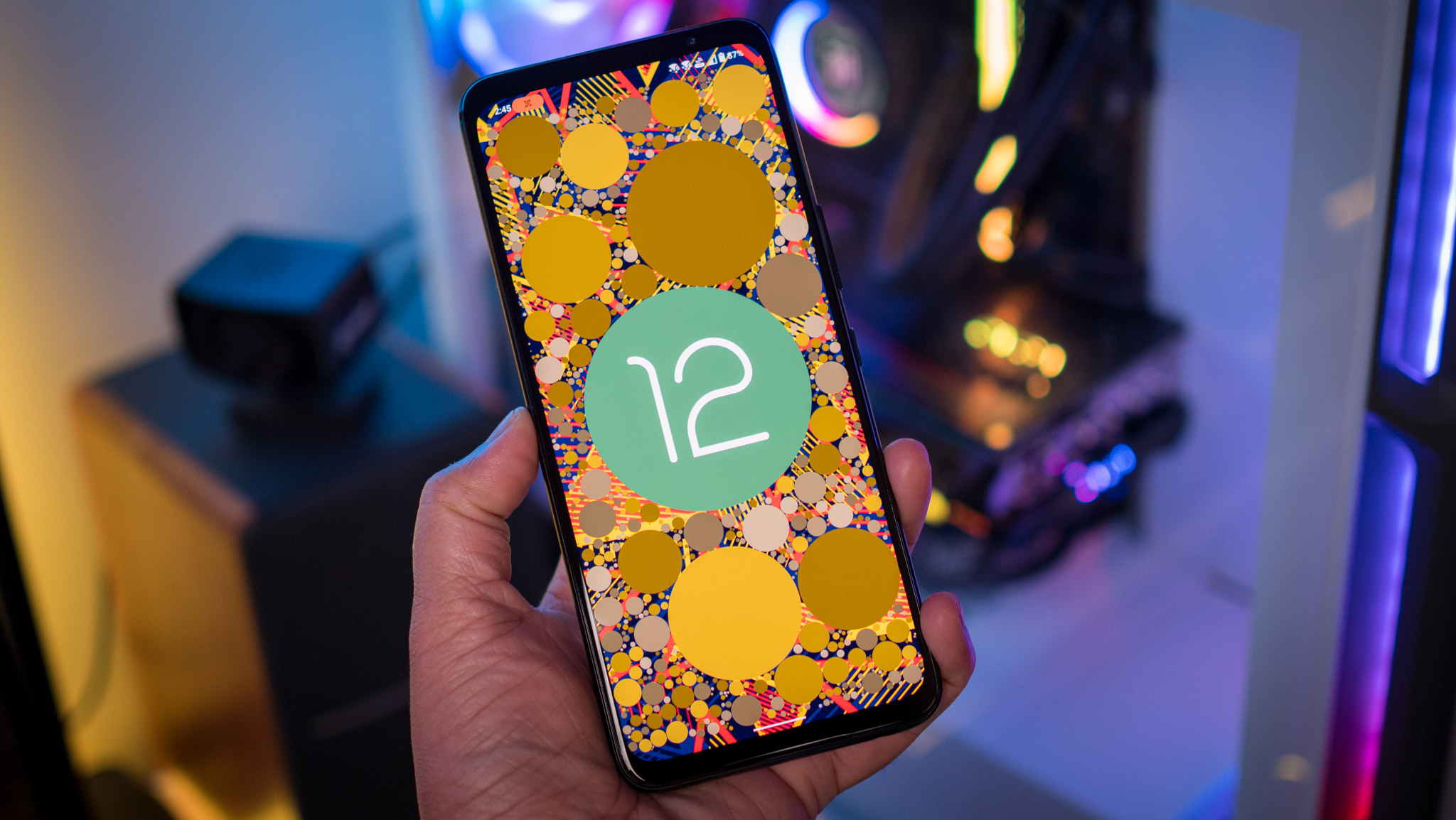
Software is usually the biggest drawback for most gaming phones, with manufacturers usually offering a cluttered interface that's often buggy. Thankfully, ASUS does a great job here, with the ROG Phone 6 Pro giving you a choice between two interface styles: an ROG UI that has a distinct gaming-focused design, and Zen UI, a clean Android interface that doesn't have any overt customization.
There's no bloatware here, and the clean UI is a joy to use.
I used Zen UI by default, and it has been thoroughly enjoyable. The phone runs Android 12 out of the box, and you'll find Material You styling throughout the interface. There's a dynamic color picker that works just as well as Pixel phones, and the best part is that you get to pick your own if you don't like the available accent colors.
There's an exhaustive amount of customization on offer here. You can set up a squeeze gesture to launch Google Assistant — something I used extensively on older Pixels — and it is great to see ASUS continuing to offer the feature. There's also a double tap back gesture that lets you toggle the flashlight, launch the camera, and more. You get screen-off gestures, and a lot more options that are inherently customizable.
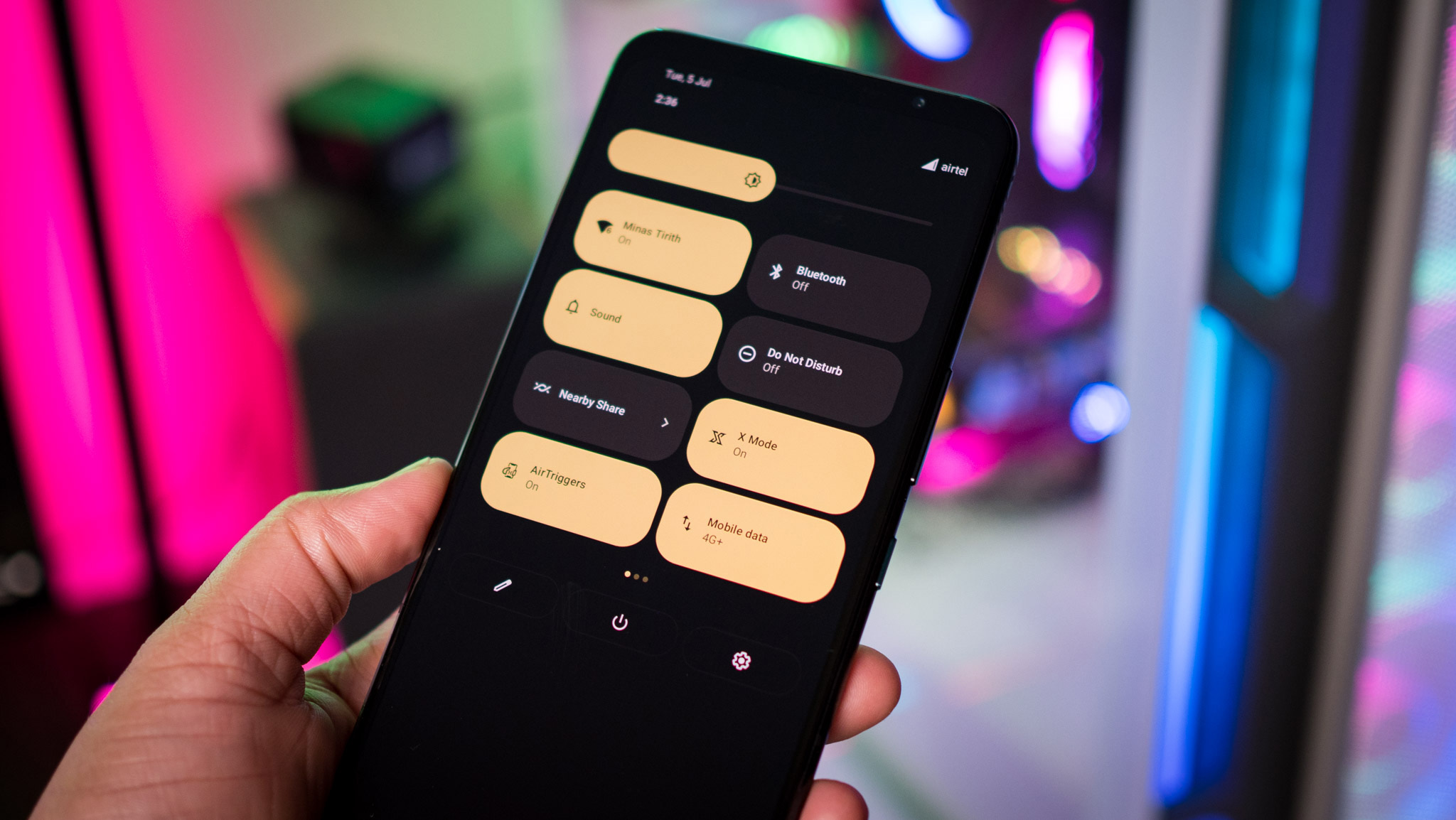
Interestingly, the phone comes with ASUS's own dialer in addition to Google's option. Google mandated the use of its own dialer and Android Messages starting with Android 11, and these days, Samsung is the only other brand that continues to offer its own dialer. Elsewhere, there's no bloatware whatsoever in Zen UI, and the interface is well-optimized for the hardware. I usually run into issues with push notifications or errant crashes on pre-release software, but that wasn't the case here.
As for software updates, ASUS says it will deliver two platform updates and "at least" two years of security updates. That's less than the industry standard of three version updates and four years of security patches, with ASUS noting that it doesn't have the engineering resources to deliver three platform updates. That's a letdown considering the sheer potential of the hardware and the fact that it will continue to be relevant several years down the line.
ASUS ROG Phone 6 Pro: The competition
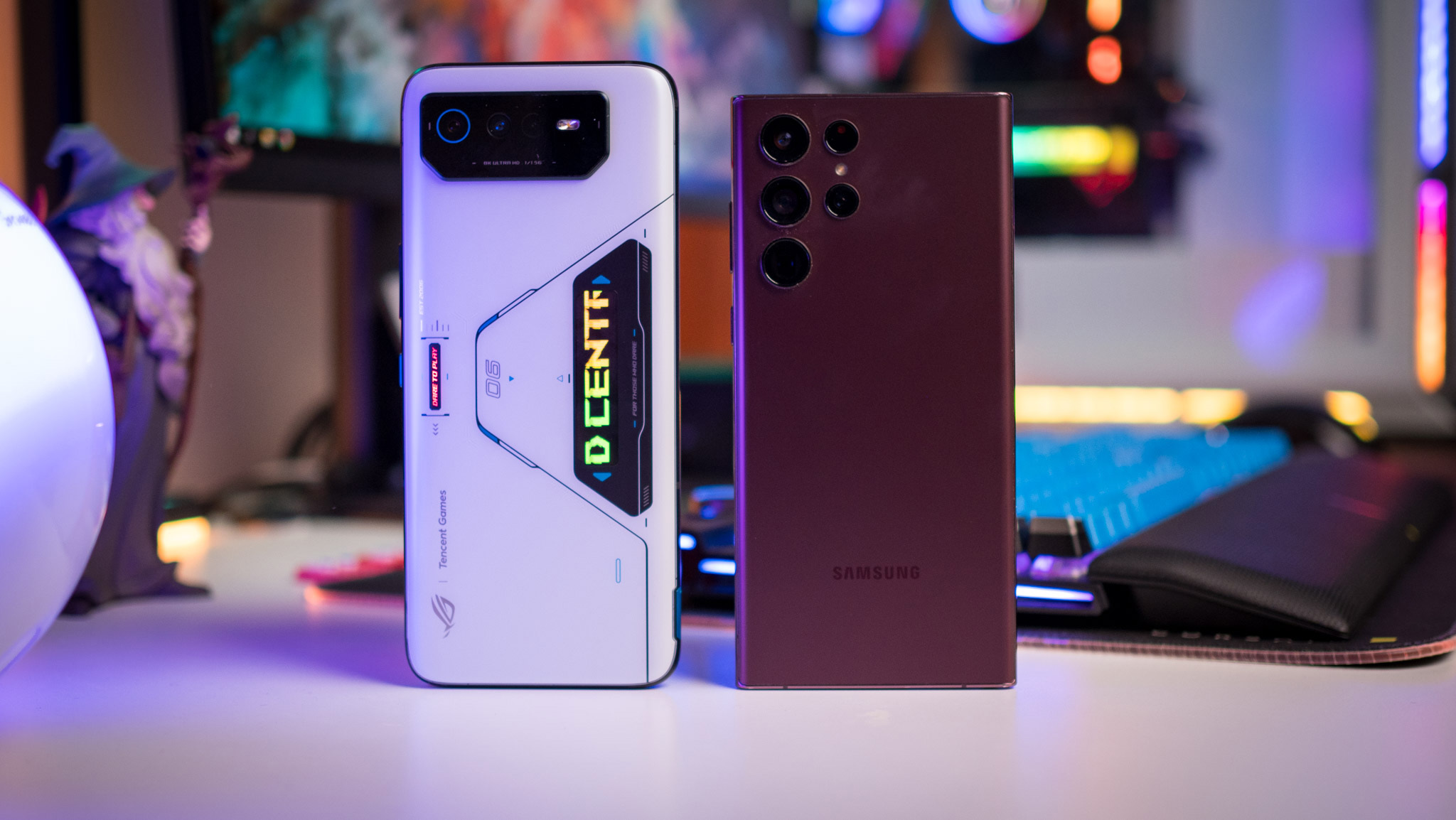
The best overall phone continues to be the Galaxy S22 Ultra, and while it lacks the presence of a gaming phone, it holds its own for most titles. You will notice some throttling during extended gaming sessions, and the battery life isn't as good. The phone heats up a lot more as well during gaming, and you miss out on the software extras you get here. That said, the S22 Ultra has a phenomenal camera, and it will get more software updates than any other Android phone.
If you're looking for a gaming phone, Nubia's Redmagic 7 Pro is a decent enough alternative. It has a bold styling and features a 120Hz AMOLED screen, Snapdragon 8 Gen 1, 16GB of RAM and 256GB of storage, and a 5000mAh battery with 65W fast charging. You'll find trigger buttons on the side that can be customized for gaming, and at $799, you are getting a lot of hardware here. The downside is that the software isn't very optimized, the UI isn't cohesive, there are plenty of bugs, and it won't get updates on time.
ASUS ROG Phone 6 Pro: Should you buy it?
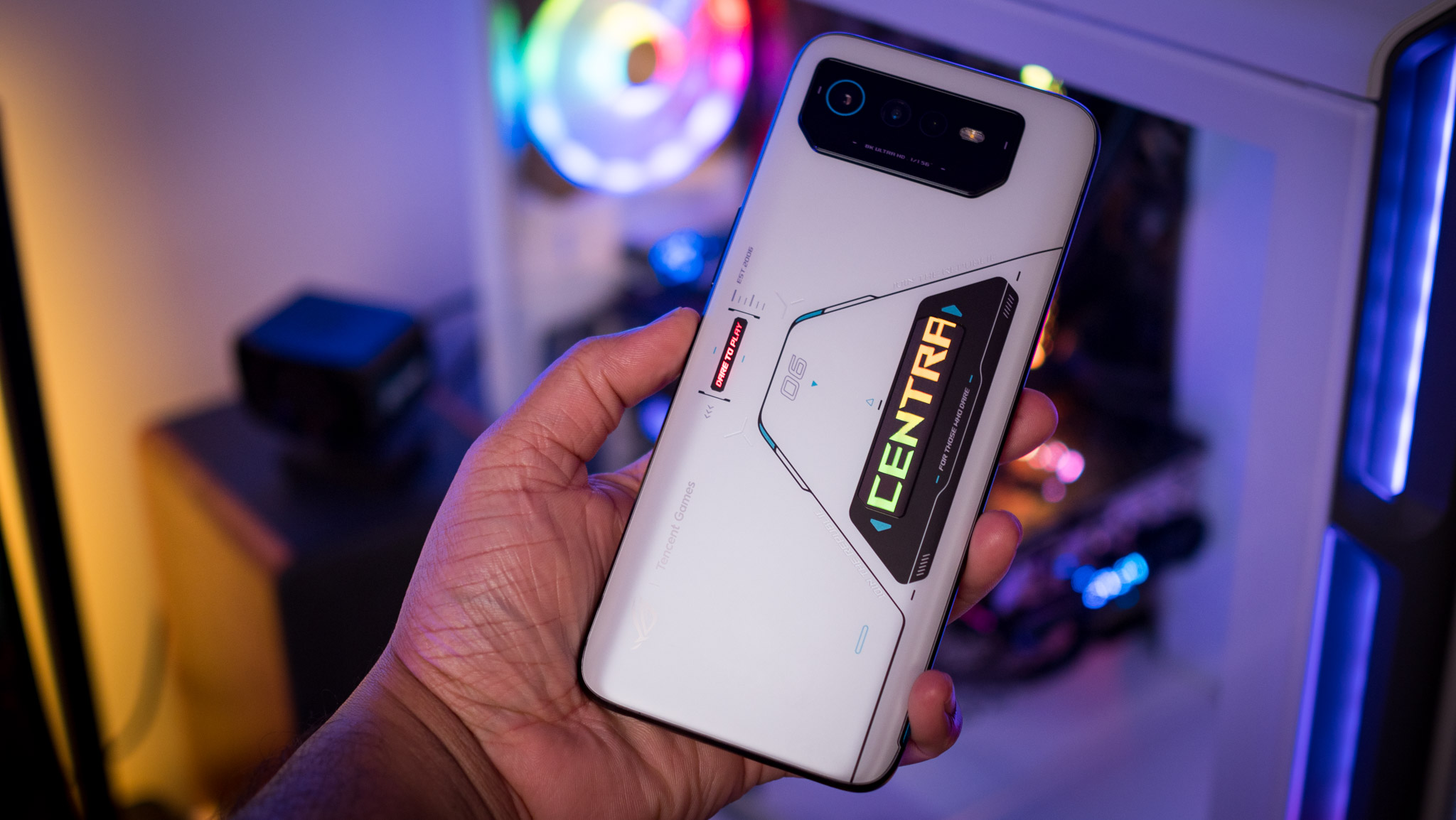
You should buy this if:
- You want the best gaming phone
- You need a large AMOLED screen that's ideal for gaming
- You need a phone that lasts over a day with heavy use
- You want a 3.5mm jack and LED notification light
- You're looking for a clean Android interface without any bloatware
You shouldn't buy this if:
- You want a phone that gets long-term software updates
- You want the best cameras
- You need wireless charging
ASUS didn't change the fundamentals too much with the ROG Phone 6 Pro, but it introduced sizeable upgrades in key areas, resulting in the best gaming phone available today. The 165Hz AMOLED screen is a delight in day-to-day use, and it absolutely delivers for gaming and consuming media. You get the loudest onboard audio here, and there's a 3.5mm jack with a decent internal DAC for high-res audio and an LED notification light.
The internal hardware is the most powerful of any phone today, and the cooling system makes a tangible difference in real-world use, allowing you to game for longer without running into any throttling issues.
Then there's the software; ASUS has delivered a clean interface without any overt styling or bloatware, and there's plenty of customization that power users will love. The biggest downside is that the phone will only get two platform updates; the hardware on offer here can easily last double that, so ASUS needs to do better in this area.
The camera is serviceable, but it is clear that this isn't a priority for ASUS. Still, you get decent shots in most situations, and the sensor itself is able to deliver standout photos if you switch to a third-party camera. The battery life is among the best on Android, with the phone lasting two days without too much of a hassle.
Ultimately, it comes down to what you're looking for in a device. The ROG Phone 6 Pro costs a lot of money, but you're getting a lot of features here. If you need multi-day battery life, 3.5mm jack, or a clean UI without any bloatware, there aren't many alternatives in the high-end segment. So even without all the gaming-focused features, this is a great all-round device for daily use. And if you're looking for a gaming phone with aggressive styling and unique extras, there's nothing else that comes close.
Sure, the Galaxy S22 Ultra or the Find X5 Pro have much better cameras, but other than that, there isn't an area where ASUS doesn't hold its own. If you need a flagship camera, you'll have to pick up one of the alternatives I've outlined above. But if you're not that keen on taking photos and want a phone that stands out, this is the obvious choice in 2022.

Harish Jonnalagadda is Android Central's Senior Editor overseeing mobile coverage. In his current role, he leads the site's coverage of Chinese phone brands, networking products, and AV gear. He has been testing phones for over a decade, and has extensive experience in mobile hardware and the global semiconductor industry. Contact him on Twitter at @chunkynerd.
